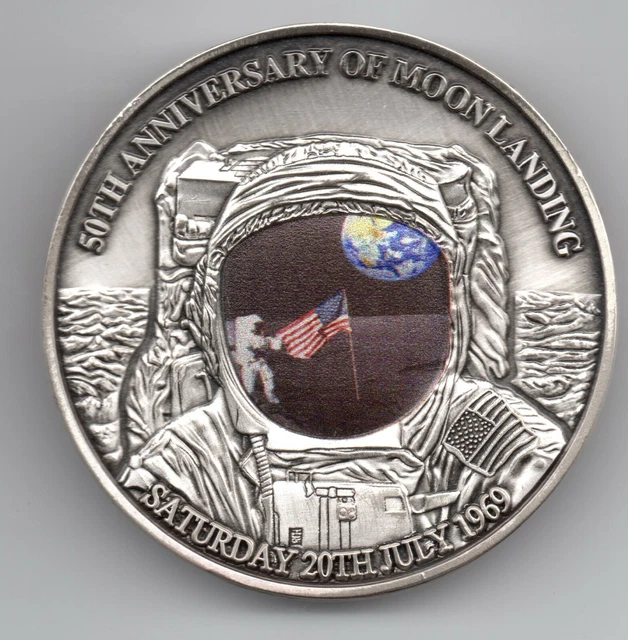3D Dome Moon Surface Silver Coin 1st Man Landing U C Old Apollo 1969 Sci-Fi USA
£14.99 Buy It Now or Best Offer, £3.49 Shipping, 30-Day Returns, eBay Money Back Guarantee
Seller:  checkoutmyunqiuefunitems ✉️ (3,880) 99.9%,
Location: Manchester, Take a look at my other items, GB,
Ships to: WORLDWIDE,
Item: 276421230074
3D Dome Moon Surface Silver Coin 1st Man Landing U C Old Apollo 1969 Sci-Fi USA. Moon Dome First Man on the Moon Coin This silver plated coin has been struck as a solid dome of the moons surface The front illustrates the first man on the moons Neil Armstrongs visor It reflects Buzz Aldrin Putting the USA Flag in the moon with Earth in the distance It has the words "50 th Anniversary of the Moon Landing" and the date of the memorable event. Saturday 20th July 1969. It is antique silver plated and the finish perfectly replicates the moon’s contours and cratered surface, you can even see the Sea of Tranquility where the eagle landed 50 years ago. Minted to mark the 50th Anniversary of the Apollo 11 moonlanding It is 50mm in diameter and it is quite heavy weighting in at just over 83 grams The Height of the dome 10.8mm “One small step for man, one giant leap for mankind” Fifty years ago, on July 20 1969, the world was transfixed as over half a billion people watched one of mankind’s greatest achievements – the Apollo 11 moon landing, live on television. When Buzz Aldrin and Neil Armstrong touched down on the lunar surface, history was made. Today, fifty years on, history is made again as their achievement is celebrated on a remarkable coin The Moon Landing 50th Anniversary Moon Dome Coin. Everyone from hobby astronomers all the way to lycanthropes seems to be fascinated by the moon. After all, our very own satellite is one of the few celestial bodies we can clearly see without any special equipment. And then there are the countless legends surrounding the moon and its supposed powers... With these Moon Coins, you can carry around your very own moon replica at 136.794.240:1 scale! An Amazing Keepsake and Souvenir of an Incredible Event. Would Make a Perfect Gift Commemorative silver plated coin. In Excellent Condition Would make an Excellent Gift or Collectable Keepsake to Mans Greatest Achievement Please Check out my other Moon Landing Memrobilia. Please see my other items Bid with Confidence - Check My 100% Positive Feedback from over 600 Satisfied Customers I have over 10 years of Ebay Selling Experience - So Why Not Treat Yourself? I have got married recently and need to raise funds to meet the costs also we are planning to move into a house together I always combined postage on multiple items so why not > Check out my other items ! All Payment Methods in All Major Currencies Accepted. All Items Sent out within 24 hours of Receiving Payment.
checkoutmyunqiuefunitems ✉️ (3,880) 99.9%,
Location: Manchester, Take a look at my other items, GB,
Ships to: WORLDWIDE,
Item: 276421230074
3D Dome Moon Surface Silver Coin 1st Man Landing U C Old Apollo 1969 Sci-Fi USA. Moon Dome First Man on the Moon Coin This silver plated coin has been struck as a solid dome of the moons surface The front illustrates the first man on the moons Neil Armstrongs visor It reflects Buzz Aldrin Putting the USA Flag in the moon with Earth in the distance It has the words "50 th Anniversary of the Moon Landing" and the date of the memorable event. Saturday 20th July 1969. It is antique silver plated and the finish perfectly replicates the moon’s contours and cratered surface, you can even see the Sea of Tranquility where the eagle landed 50 years ago. Minted to mark the 50th Anniversary of the Apollo 11 moonlanding It is 50mm in diameter and it is quite heavy weighting in at just over 83 grams The Height of the dome 10.8mm “One small step for man, one giant leap for mankind” Fifty years ago, on July 20 1969, the world was transfixed as over half a billion people watched one of mankind’s greatest achievements – the Apollo 11 moon landing, live on television. When Buzz Aldrin and Neil Armstrong touched down on the lunar surface, history was made. Today, fifty years on, history is made again as their achievement is celebrated on a remarkable coin The Moon Landing 50th Anniversary Moon Dome Coin. Everyone from hobby astronomers all the way to lycanthropes seems to be fascinated by the moon. After all, our very own satellite is one of the few celestial bodies we can clearly see without any special equipment. And then there are the countless legends surrounding the moon and its supposed powers... With these Moon Coins, you can carry around your very own moon replica at 136.794.240:1 scale! An Amazing Keepsake and Souvenir of an Incredible Event. Would Make a Perfect Gift Commemorative silver plated coin. In Excellent Condition Would make an Excellent Gift or Collectable Keepsake to Mans Greatest Achievement Please Check out my other Moon Landing Memrobilia. Please see my other items Bid with Confidence - Check My 100% Positive Feedback from over 600 Satisfied Customers I have over 10 years of Ebay Selling Experience - So Why Not Treat Yourself? I have got married recently and need to raise funds to meet the costs also we are planning to move into a house together I always combined postage on multiple items so why not > Check out my other items ! All Payment Methods in All Major Currencies Accepted. All Items Sent out within 24 hours of Receiving Payment.
Overseas Bidders Please Note Surface Mail Delivery Times >
Western Europe takes up to 2 weeks,
Eastern Europe up to 5 weeks,
North America up to 6 weeks,
South America, Africa and Asia up to 8 weeks and
Australasia up to 12 weeks
For that Interesting Conversational Piece, A Birthday Present, Christmas Gift, A Comical Item to Cheer Someone Up or That Unique Perfect Gift for the Person Who has Everything....You Know Where to Look for a Bargain!If You Have any Questions Please Email Me thru ebay and I Will Reply ASAP
Thanks for Looking and Best of Luck with the Bidding!!
The Countries I Send to Include Afghanistan * Albania * Algeria * American Samoa (US) * Andorra * Angola * Anguilla (GB) * Antigua and Barbuda * Argentina * Armenia * Aruba (NL) * Australia * Austria * Azerbaijan * Bahamas * Bahrain * Bangladesh * Barbados * Belarus * Belgium * Belize * Benin * Bermuda (GB) * Bhutan * Bolivia * Bonaire (NL) * Bosnia and Herzegovina * Botswana * Bouvet Island (NO) * Brazil * British Indian Ocean Territory (GB) * British Virgin Islands (GB) * Brunei * Bulgaria * Burkina Faso * Burundi * Cambodia * Cameroon * Canada * Cape Verde * Cayman Islands (GB) * Central African Republic * Chad * Chile * China * Christmas Island (AU) * Cocos Islands (AU) * Colombia * Comoros * Congo * Democratic Republic of the Congo * Cook Islands (NZ) * Coral Sea Islands Territory (AU) * Costa Rica * Croatia * Cuba * Curaçao (NL) * Cyprus * Czech Republic * Denmark * Djibouti * Dominica * Dominican Republic * East Timor * Ecuador * Egypt * El Salvador * Equatorial Guinea * Eritrea * Estonia * Ethiopia * Falkland Islands (GB) * Faroe Islands (DK) * Fiji Islands * Finland * France * French Guiana (FR) * French Polynesia (FR) * French Southern Lands (FR) * Gabon * Gambia * Georgia * Germany * Ghana * Gibraltar (GB) * Greece * Greenland (DK) * Grenada * Guadeloupe (FR) * Guam (US) * Guatemala * Guernsey (GB) * Guinea * Guinea-Bissau * Guyana * Haiti * Heard and McDonald Islands (AU) * Honduras * Hong Kong (CN) * Hungary * Iceland * India * Indonesia * Iran * Iraq * Ireland * Isle of Man (GB) * Israel * Italy * Ivory Coast * Jamaica * Jan Mayen (NO) * Japan * Jersey (GB) * Jordan * Kazakhstan * Kenya * Kiribati * Kosovo * Kuwait * Kyrgyzstan * Laos * Latvia * Lebanon * Lesotho * Liberia * Libya * Liechtenstein * Lithuania * Luxembourg * Macau (CN) * Macedonia * Madagascar * Malawi * Malaysia * Maldives * Mali * Malta * Marshall Islands * Martinique (FR) * Mauritania * Mauritius * Mayotte (FR) * Mexico * Micronesia * Moldova * Monaco * Mongolia * Montenegro * Montserrat (GB) * Morocco * Mozambique * Myanmar * Namibia * Nauru * Navassa (US) * Nepal * Netherlands * New Caledonia (FR) * New Zealand * Nicaragua * Niger * Nigeria * Niue (NZ) * Norfolk Island (AU) * North Korea * Northern Cyprus * Northern Mariana Islands (US) * Norway * Oman * Pakistan * Palau * Palestinian Authority * Panama * Papua New Guinea * Paraguay * Peru * Philippines * Pitcairn Island (GB) * Poland * Portugal * Puerto Rico (US) * Qatar * Reunion (FR) * Romania * Russia * Rwanda * Saba (NL) * Saint Barthelemy (FR) * Saint Helena (GB) * Saint Kitts and Nevis * Saint Lucia * Saint Martin (FR) * Saint Pierre and Miquelon (FR) * Saint Vincent and the Grenadines * Samoa * San Marino * Sao Tome and Principe * Saudi Arabia * Senegal * Serbia * Seychelles * Sierra Leone * Singapore * Sint Eustatius (NL) * Sint Maarten (NL) * Slovakia * Slovenia * Solomon Islands * Somalia * South Africa * South Georgia (GB) * South Korea * South Sudan * Spain * Sri Lanka * Sudan * Suriname * Svalbard (NO) * Swaziland * Sweden * Switzerland * Syria * Taiwan * Tajikistan * Tanzania * Thailand * Togo * Tokelau (NZ) * Tonga * Trinidad and Tobago * Tunisia * Turkey * Turkmenistan * Turks and Caicos Islands (GB) * Tuvalu * U.S. Minor Pacific Islands (US) * U.S. Virgin Islands (US) * Uganda * Ukraine * United Arab Emirates * United Kingdom * United States * Uruguay * Uzbekistan * Vanuatu * Vatican City * Venezuela * Vietnam * Wallis and Futuna (FR) * Yemen * Zambia * Zimbabwe Apollo 11 Mission type Crewed lunar landing Operator NASA COSPAR ID CSM: 1969-059A LM: 1969-059C SATCAT no. CSM: 4039 LM: 4041 Mission duration 8 days, 3 hours, 18 minutes, 35 seconds Spacecraft properties Spacecraft Apollo CSM-107 Apollo LM-5 Manufacturer CSM: North American Rockwell LM: Grumman Launch mass 100,756 pounds (45,702 kg) Landing mass 10,873 pounds (4,932 kg) Crew Crew size 3 Members Neil A. Armstrong Michael Collins Edwin E. Aldrin, Jr. Callsign CSM: Columbia LM: Eagle On surface: Tranquility Base Start of mission Launch date July 16, 1969, 13:32:00 UTC[1] Rocket Saturn V SA-506 Launch site Kennedy Space Center LC-39A End of mission Recovered by USS Hornet Landing date July 24, 1969, 16:50:35 UTC Landing site North Pacific Ocean 13°19′N 169°9′W Orbital parameters Reference system Selenocentric Pericynthion altitude 100.9 kilometers (54.5 nmi)[2] Apocynthion altitude 122.4 kilometers (66.1 nmi)[2] Inclination 1.25 degrees[2] Period 2 hours[2] Epoch July 19, 1969, 21:44 UTC[2] Lunar orbiter Spacecraft component Command and service module Orbital insertion July 19, 1969, 17:21:50 UTC[3] Orbital departure July 22, 1969, 04:55:42 UTC[4] Orbits 30 Lunar lander Spacecraft component Apollo Lunar Module Landing date July 20, 1969, 20:17:40 UTC[5] Return launch July 21, 1969, 17:54 UTC Landing site Mare Tranquillitatis 0.67408°N 23.47297°E[6] Sample mass 21.55 kilograms (47.51 lb) Surface EVAs 1 EVA duration 2 hours, 31 minutes, 40 seconds Docking with LM Docking date July 16, 1969, 16:56:03 UTC[3] Undocking date July 20, 1969, 17:44:00 UTC[7] Docking with LM ascent stage Docking date July 21, 1969, 21:35:00 UTC[4] Undocking date July 21, 1969, 23:41:31 UTC[4] Circular insignia: eagle with wings outstretched holds olive branch on Moon with Earth in background, in blue and gold border. Three astronauts in spacesuits without helmets sitting in front of a large photo of the Moon. Crew: Neil Armstrong, Michael Collins, Buzz Aldrin Apollo program Apollo 11 was the spaceflight that landed the first two humans on the Moon. Commander Neil Armstrong and lunar module pilot Buzz Aldrin, both American, landed the Apollo Lunar Module Eagle on July 20, 1969, at 20:17 UTC. Armstrong became the first person to step onto the lunar surface six hours later on July 21 at 02:56:15 UTC; Aldrin joined him 19 minutes later. They spent about two and a quarter hours together outside the spacecraft, and collected 47.5 pounds (21.5 kg) of lunar material to bring back to Earth. Command module pilot Michael Collins flew the command module Columbia alone in lunar orbit while they were on the Moon's surface. Armstrong and Aldrin spent 21.5 hours on the lunar surface at a site they named Tranquility Base before rejoining Columbia in lunar orbit. Apollo 11 was launched by a Saturn V rocket from Kennedy Space Center on Merritt Island, Florida, on July 16 at 13:32 UTC, and was the fifth crewed mission of NASA's Apollo program. The Apollo spacecraft had three parts: a command module (CM) with a cabin for the three astronauts, and the only part that returned to Earth; a service module (SM), which supported the command module with propulsion, electrical power, oxygen, and water; and a lunar module (LM) that had two stages – a descent stage for landing on the Moon, and an ascent stage to place the astronauts back into lunar orbit. After being sent to the Moon by the Saturn V's third stage, the astronauts separated the spacecraft from it and traveled for three days until they entered lunar orbit. Armstrong and Aldrin then moved into Eagle and landed in the Sea of Tranquillity. The astronauts used Eagle's ascent stage to lift off from the lunar surface and rejoin Collins in the command module. They jettisoned Eagle before they performed the maneuvers that propelled the ship out of the last of its 30 lunar orbits on a trajectory back to Earth.[4] They returned to Earth and splashed down in the Pacific Ocean on July 24 after more than eight days in space. Armstrong's first step onto the lunar surface was broadcast on live TV to a worldwide audience. He described the event as "one small step for [a] man, one giant leap for mankind."[8][9] Apollo 11 effectively ended the Space Race and fulfilled a national goal proposed in 1961 by President John F. Kennedy: "before this decade is out, of landing a man on the Moon and returning him safely to the Earth."[10] Background In the late 1950s and early 1960s, the United States was engaged in the Cold War, a geopolitical rivalry with the Soviet Union.[11] On October 4, 1957, the Soviet Union launched Sputnik 1, the first artificial satellite. This surprise success fired fears and imaginations around the world. It demonstrated that the Soviet Union had the capability to deliver nuclear weapons over intercontinental distances, and challenged American claims of military, economic and technological superiority.[12] This precipitated the Sputnik crisis, and triggered the Space Race.[13] President Dwight D. Eisenhower responded to the Sputnik challenge by creating the National Aeronautics and Space Administration (NASA), and initiating Project Mercury,[14] which aimed to launch a man into Earth orbit.[15] But on April 12, 1961, Soviet cosmonaut Yuri Gagarin became the first person in space, and the first to orbit the Earth.[16] It was another body blow to American pride.[17] In spite of that, the Apollo program faced the opposition of many Americans and was dubbed "moondoggle".[18][19] Nearly a month later, on May 5, 1961, Alan Shepard became the first American in space, completing a 15-minute suborbital journey. After being recovered from the Atlantic Ocean, he received a congratulatory telephone call from Eisenhower's successor, John F. Kennedy.[20] Kennedy believed that it was in the national interest of the United States to be superior to other nations, and that the perception of American power was at least as important as the actuality. It was therefore intolerable that the Soviet Union was more advanced in the field of space exploration. He was determined that the United States should compete, and sought a challenge that maximized its chances of winning.[11] Since the Soviet Union had better booster rockets, he required a challenge that was beyond the capacity of the existing generation of rocketry, one where the US and Soviet Union would be starting from a position of equality. Something spectacular, even if it could not be justified on military, economic or scientific grounds. After consulting with his experts and advisors, he chose such a project.[21] On May 25, 1961, he addressed the United States Congress on "Urgent National Needs" and declared: I believe that this nation should commit itself to achieving the goal, before this decade is out, of landing a man on the moon and returning him safely to the Earth. No single space project in this period will be more impressive to mankind, or more important for the long-range exploration of space; and none will be so difficult or expensive to accomplish. We propose to accelerate the development of the appropriate lunar space craft. We propose to develop alternate liquid and solid fuel boosters, much larger than any now being developed, until certain which is superior. We propose additional funds for other engine development and for unmanned explorations – explorations which are particularly important for one purpose which this nation will never overlook: the survival of the man who first makes this daring flight. But in a very real sense, it will not be one man going to the Moon – if we make this judgment affirmatively, it will be an entire nation. For all of us must work to put him there. — Kennedy's speech to the congress[22] The effort to land a man on the Moon already had a name: Project Apollo.[23] An early and crucial decision was choosing lunar orbit rendezvous over both direct ascent and Earth orbit rendezvous. A space rendezvous is an orbital maneuver in which two spacecraft navigate through space and meet up. In July 1962 NASA head James Webb announced that lunar orbit rendezvous would be used[24][25] and that the Apollo spacecraft would have three major parts: a command module (CM) with a cabin for the three astronauts, and the only part that returned to Earth; a service module (SM), which supported the command module with propulsion, electrical power, oxygen, and water; and a lunar module (LM) that had two stages – a descent stage for landing on the Moon, and an ascent stage to place the astronauts back into lunar orbit.[26] This design meant that the spacecraft could be launched by a single Saturn V rocket that was then under development.[27] Technologies and technics required for Apollo were developed by Project Gemini.[28] Project Apollo was abruptly halted by the Apollo 1 fire on January 27, 1967, in which astronauts Gus Grissom, Ed White, and Roger B. Chaffee died, and the subsequent investigation.[29] In October 1968, Apollo 7 evaluated the command module in Earth orbit,[30] and in December Apollo 8 tested it in lunar orbit.[31] In March 1969, Apollo 9 put the lunar module through its paces in Earth orbit,[32] and in May Apollo 10 conducted a "dress rehearsal" in lunar orbit. By July 1969, all was in readiness for Apollo 11 to take the final step onto the Moon.[33] The Soviet Union competed with the US in the Space Race, but its early lead was lost through repeated failures in development of the N1 launcher, which was comparable to the Saturn V.[34] The Soviets tried to beat the US to return lunar material to the Earth by means of unmanned probes. On July 13, three days before Apollo 11's launch, the Soviet Union launched Luna 15, which reached lunar orbit before Apollo 11. During descent, a malfunction caused Luna 15 to crash in Mare Crisium about two hours before Armstrong and Aldrin took off from the Moon's surface to begin their voyage home. The Nuffield Radio Astronomy Laboratories radio telescope in England recorded transmissions from Luna 15 during its descent, and these were released in July 2009 for the 40th anniversary of Apollo 11.[35] Personnel Prime crew Position Astronaut Commander Neil A. Armstrong Second and last spaceflight Command Module Pilot Michael Collins Second and last spaceflight Lunar Module Pilot Edwin "Buzz" E. Aldrin Jr. Second and last spaceflight The initial crew assignment of Commander Neil Armstrong, Command Module Pilot (CMP) Jim Lovell, and Lunar Module Pilot (LMP) Buzz Aldrin on the backup crew for Apollo 9 was officially announced on November 20, 1967.[36] Lovell and Aldrin had previously flown together as the crew of Gemini 12. Due to design and manufacturing delays in the LM, Apollo 8 and Apollo 9 swapped prime and backup crews, and Armstrong's crew became the backup for Apollo 8. Based on the normal crew rotation scheme, Armstrong was then expected to command Apollo 11.[37] There would be one change. Michael Collins, the CMP on the Apollo 8 crew, began experiencing trouble with his legs. Doctors diagnosed the problem as a bony growth between his fifth and sixth vertebrae, requiring surgery.[38] Lovell took his place on the Apollo 8 crew, and when Collins recovered he joined Armstrong's crew as CMP. In the meantime, Fred Haise filled in as backup LMP, and Aldrin as backup CMP for Apollo 8.[39] Apollo 11 was the second American mission where all the crewmembers had prior spaceflight experience,[40] the first being Apollo 10.[41] The next was STS-26 in 1988.[40] Deke Slayton gave Armstrong the option to replace Aldrin with Lovell, since some thought Aldrin was difficult to work with. Armstrong had no issues working with Aldrin, but thought it over for a day before declining. He thought Lovell deserved to command his own mission (eventually Apollo 13).[42] The Apollo 11 prime crew had none of the close cheerful camaraderie that characterized that of Apollo 12. Instead they forged an amiable working relationship. Armstrong in particular was notoriously aloof, but Collins, who considered himself a loner, confessed to rebuffing Aldrin's attempts to create a more personal relationship.[43] Aldrin and Collins described the crew as "amiable strangers".[44] Armstrong did not agree with the assessment, and said "...all the crews I was on worked very well together."[44] Backup crew Position Astronaut Commander James A. Lovell Jr. Command Module Pilot William A. Anders Lunar Module Pilot Fred W. Haise Jr. The backup crew consisted of Lovell as Commander, William Anders as CMP, and Haise as LMP. Anders had flown with Lovell on Apollo 8.[40] In early 1969, he accepted a job with the National Aeronautics and Space Council effective August 1969, and announced that he would retire as an astronaut at that time. Ken Mattingly was moved from the support crew into parallel training with Anders as backup CMP in case Apollo 11 was delayed past its intended July launch date, at which point Anders would be unavailable. Lovell, Haise, and Mattingly were later assigned as the prime crew of Apollo 13.[45] Support crew During Projects Mercury and Gemini, each mission had a prime and a backup crew. For Apollo, a third crew of astronauts was added, known as the support crew. The support crew maintained the flight plan, checklists and mission ground rules, and ensured that the prime and backup crews were apprised of changes. They developed procedures, especially those for emergency situations, so these were ready for when the prime and backup crews came to train in the simulators, allowing them to concentrate on practicing and mastering them.[46] For Apollo 11, the support crew consisted of Ken Mattingly, Ronald Evans and Bill Pogue.[47] Capsule communicators CAPCOM Charles Duke, with backup crewmen Jim Lovell and Fred Haise listening in during Apollo 11's descent The capsule communicator (CAPCOM) was an astronaut at the Mission Control Center in Houston, Texas, who was the only person who communicated directly with the flight crew.[48] For Apollo 11, the CAPCOMs were: Charles Duke, Ronald Evans, Bruce McCandless II, James Lovell, William Anders, Ken Mattingly, Fred Haise, Don L. Lind, Owen K. Garriott and Harrison Schmitt.[47] Flight directors The flight directors for this mission were:[49][50][51][52][53][54] Name Shift Team Activities Clifford E. Charlesworth 1 Green Launch and extravehicular activity (EVA) Gerald D. Griffin 1 Gold Backup for shift 1 Gene Kranz 2 White Lunar landing Glynn Lunney 3 Black Lunar ascent Milton Windler 4 Maroon Planning Preparations Insignia Apollo 11 insignia The Apollo 11 mission emblem was designed by Collins, who wanted a symbol for "peaceful lunar landing by the United States". At Lovell's suggestion, he chose the bald eagle, the national bird of the United States, as the symbol. Tom Wilson, a simulator instructor, suggested that they put an olive branch in its beak to represent their peaceful mission. Collins added a lunar background with the Earth in the distance. The sunlight in the image was coming from the wrong direction; the shadow should have been in the lower part of the Earth instead of the left. Aldrin, Armstrong and Collins decided that the Eagle and the Moon would be in their natural colours, and decided on a blue and gold border. Armstrong was concerned that "eleven" would not be understood by non-English speakers, so they went with "Apollo 11",[55] and they decided not to put their names on the patch, so it would "be representative of everyone who had worked toward a lunar landing".[56] An illustrator at the MSC did the artwork, which was then sent off to NASA officials for approval.[55] The design was rejected. Bob Gilruth, the director of the MSC felt that the talons of the eagle looked "too warlike".[57] After some discussion, the olive branch was moved to the talons.[57] When the Eisenhower dollar coin was released in 1971, the patch design provided the eagle for its reverse side.[58] The design was also used for the smaller Susan B. Anthony dollar unveiled in 1979.[59] Call signs After the crew of Apollo 10 named their spacecraft Charlie Brown and Snoopy, assistant manager for public affairs Julian Scheer wrote to George M. Low, the Manager of the Apollo Spacecraft Program Office at the Manned Spacecraft Center (MSC), to suggest the Apollo 11 crew be less flippant in naming their craft. The name Snowcone was used for the CM and Haystack was used for the LM in both internal and external communications during early mission planning.[60] The LM was named Eagle after the motif which was featured prominently on the mission insignia. At Scheer's suggestion, the CM was named Columbia after Columbiad, the giant cannon that launched a spacecraft (also from Florida) in Jules Verne's 1865 novel From the Earth to the Moon. It also referenced Columbia, a historical name of the United States. [61][62] In Collins' 1976 book, he said Columbia was in reference to Christopher Columbus.[63] Mementos Apollo 11 space-flown silver Robbins medallion The astronaut had personal preference kits (PPKs), small bags containing personal items of significance that they wanted to take with them on the mission.[64] Five 0.5-pound (0.23 kg) PPKs were carried on Apollo 11: three (one for each astronaut) were stowed on Columbia before launch, and two on Eagle.[65] Neil Armstrong's LM PPK contained a piece of wood from the Wright brothers' 1903 Wright Flyer's left propeller and a piece of fabric from its wing,[66] along with a diamond-studded astronaut pin originally given to Slayton by the widows of the Apollo 1 crew. This pin had been intended to be flown on that mission and given to Slayton afterwards, but following the disastrous launch pad fire and subsequent funerals, the widows gave the pin to Slayton. Armstrong took it with him on Apollo 11.[67] Site selection Map of Moon showing prospective sites for Apollo 11. Site 2 was chosen. NASA's Apollo Site Selection Board announced five potential landing sites on February 8, 1968. These were the result of two years' worth of studies based on high-resolution photography of the lunar surface by the five unmanned probes of the Lunar Orbiter program and information about surface conditions provided by the Surveyor program.[68] The best Earth-bound telescopes could not resolve features with the resolution Project Apollo required.[69] The landing site had to be close to the lunar equator to minimize the amount of propellant required; clear of obstacles to minimize maneuvering, and flat to simplify the task of the landing radar. Scientific value was not a consideration.[70] Areas that appeared promising on photographs taken on Earth were often found to be totally unacceptable. The original requirement that the site be free of craters had to be relaxed, as no such site was found.[71] Five sites were considered: Sites 1 and 2 were in the Sea of Tranquility (Mare Tranquilitatis); Site 3 was in the Central Bay (Sinus Medii); and Sites 4 and 5 were in the Ocean of Storms (Oceanus Procellarum).[68] The final site selection was based on seven criteria: The site needed to be smooth, with relatively few craters; with approach paths free of large hills, tall cliffs or deep craters that might confuse the landing radar and cause it to issue incorrect readings; reachable with a minimum amount of propellant; allowing for delays in the launch countdown; providing the Apollo spacecraft with a free-return trajectory, one that would allow it to coast around the Moon and safely return to Earth without requiring any engine firings should a problem arise on the way to the Moon; with good visibility during the landing approach, meaning that the Sun would be between 7 and 20 degrees behind the LM; and a general slope of less than 2 degrees in the landing area.[68] The requirement for the Sun angle was particularly restrictive, limiting the launch date to one day per month.[68] A landing just after dawn was chosen to limit the temperature extremes the astronauts would experience.[72] The Apollo Site Selection Board selected Site 2, with Sites 3 and 5 as backups in the event of the launch being delayed. In May 1969, Apollo 10's lunar module flew to within 15 kilometers (9.3 mi) of Site 2, and reported that it was acceptable.[73][74] First step decision During the first press conference after the Apollo 11 crew was announced, the first question a reporter asked was, "Which one of you gentlemen will be the first man to step onto the lunar surface?"[75][76] Slayton told the reporter that it had not been decided, and Armstrong added that it was "not based on individual desire".[75] One of the first versions of the egress checklist had the lunar module pilot exit the spacecraft before the command module pilot, which matched what had been done in previous missions.[77] The commander had never performed the spacewalk.[78] Reporters wrote in early 1969 that Aldrin would be the first to walk on the Moon, and Associate Administrator George Mueller told reporters he would be the first as well. Aldrin heard that Armstrong would be the first to step on the Moon because Armstrong was a civilian, which made Aldrin livid. Aldrin attempted to persuade other lunar module pilots he should be first, but they responded cynically about what they perceived as a lobbying campaign. Attempting to stem interdepartmental conflict, Slayton told Aldrin that Armstrong would be first since he was the commander. The decision was announced in a press conference on April 14, 1969.[79] For decades, Aldrin believed the final decision was largely driven by the lunar module's hatch location. Because the astronauts had their spacesuits on and the spacecraft was so small, maneuvering to exit the spacecraft was difficult. The crew tried a simulation in which Aldrin left the spacecraft first, but he damaged the simulator while attempting to egress. While this was enough for mission planners to make their decision, Aldrin and Armstrong were left in the dark on the decision until late spring.[80] Slayton told Armstrong the plan was to have him leave the spacecraft first, if he agreed. Armstrong said, "Yes, that’s the way to do it."[81] The media accused Armstrong of exercising his commander's prerogative to exit the spacecraft first.[82] Chris Kraft revealed in his 2001 autobiography that a meeting occurred between Gilruth, Slayton, Low, and himself to make sure Aldrin would not be the first to walk on the Moon. They argued that the first person to walk on the Moon should be like Charles Lindbergh, a calm and quiet person. They made the decision to change the flight plan so the commander was the first to egress from the spacecraft.[83] Pre-launch Saturn V SA-506, the rocket carrying the Apollo 11 spacecraft, moves out of the Vehicle Assembly Building towards Launch Complex 39 The ascent stage of lunar module LM-5 arrived at the Kennedy Space Center on January 8, 1969, followed by the descent stage four days later, and Command and Service Module CM-107 on January 23.[1] There were several differences between LM-5 and Apollo 10's LM-4; LM-5 had a VHF radio antenna to facilitate communication with the astronauts during their EVA on the lunar surface; a lighter ascent engine; more thermal protection on the landing gear; and a package of scientific experiments known as the Early Apollo Scientific Experiments Package (EASEP). The only change in the configuration of the command module was the removal of some insulation from the forward hatch.[84][85] The command and service modules were mated on January 29, and moved from the Operations and Checkout Building to the Vehicle Assembly Building on April 14.[1] The S-IVB third stage of Saturn V AS-506 had arrived on January 18, followed by the S-II second stage on February 6, S-IC first stage on February 20, and the Saturn V Instrument Unit on February 27. At 1230 on May 20, the 5,443-tonne (5,357-long-ton; 6,000-short-ton) assembly departed the Vehicle Assembly Building atop the crawler-transporter, bound for Launch Pad 39A, part of Launch Complex 39, while Apollo 10 was still on its way to the Moon. A countdown test commenced on June 26, and concluded on July 2. The launch complex was floodlit on the night of July 15, when the crawler-transporter carried the mobile service structure back to its parking area.[1] In the early hours of the morning, the fuel tanks of the S-II and S-IVB stages were filled with liquid hydrogen.[86] Fueling was completed by three hours before launch.[87] Launch operations were partly automated, with 43 programs written in the ATOLL programming language.[88] Slayton roused the crew shortly after 0400, and they showered, shaved, and had the traditional pre-flight breakfast of steak and eggs with Slayton and the backup crew. They then donned their space suits and began breathing pure oxygen. At 0630, they headed out to Launch Complex 39.[89] Haise entered Columbia about three hours and ten minutes before launch time. Along with a technician, he helped Armstrong into the left hand couch at 06:54. Five minutes later, Collins joined him, taking up his position on the right hand couch. Finally, Aldrin entered, taking the center couch.[87] Haise left around two hours and ten minutes before launch.[90] The closeout crew sealed the hatch, and the cabin was purged and pressurized. The closeout crew then left the launch complex about an hour before launch time. The countdown became automated at three minutes and twenty seconds before launch time.[87] Over 450 personnel were at the consoles in the firing room.[86] Mission Launch and flight to lunar orbit The Apollo 11 Saturn V space vehicle lifts off with Astronauts Neil A. Armstrong, Michael Collins and Edwin E. Aldrin Jr. at 9:32 a.m. EDT July 16, 1969, from Kennedy Space Center's Launch Complex 39A. An estimated one million spectators watched the launch of Apollo 11 from the highways and beaches in the vicinity of the launch site. Dignitaries included the Chief of Staff of the United States Army, General William Westmoreland, four cabinet members, 19 state governors, 40 mayors, 60 ambassadors and 200 congressmen. Vice President Spiro Agnew viewed the launch with the former president, Lyndon B. Johnson and his wife Lady Bird Johnson.[86][91] Around 3,500 media representatives were present.[92] About two-thirds were from the United States; the rest came from 55 other countries. The launch was televised live in 33 countries, with an estimated 25 million viewers in the United States alone. Millions more around the world listened to radio broadcasts.[91][86] President Richard Nixon viewed the launch from his office in the White House with his NASA liaison officer, Apollo astronaut Frank Borman.[93] Saturn V AS-506 launched Apollo 11 on July 16, 1969, at 13:32:00 UTC (9:32:00 EDT).[1] At 13.2 seconds into the flight, the launch vehicle began to roll into its flight azimuth of 72.058°. Full shutdown of the first-stage engines occurred at about 2 minutes and 42 seconds into the mission, followed by separation of the S-IC and ignition of the S-II engines. The second stage engines then cut-off and separated at about 9 minutes and 8 seconds, allowing the first ignition of the S-IVB engine a few seconds later.[3] Apollo 11 entered Earth orbit at an altitude of 100.4 nautical miles (185.9 km) by 98.9 nautical miles (183.2 km), twelve minutes into its flight. After one and a half orbits, a second ignition of the S-IVB engine pushed the spacecraft onto its trajectory toward the Moon with the trans-lunar injection (TLI) burn at 16:22:13 UTC. About 30 minutes later, with Collins in the left seat and at the controls, the transposition, docking, and extraction maneuver was performed. This involved separating Columbia from the spent S-IVB stage, turning around, and docking with Eagle still attached to the stage. After the LM was extracted, the combined spacecraft headed for the Moon, while the rocket stage flew on a trajectory past the Moon.[94][3] This was done to avoid colliding with the spacecraft, the Earth, or the Moon. A slingshot effect from passing around the Moon threw it into an orbit around the Sun.[95] On July 19 at 17:21:50 UTC, Apollo 11 passed behind the Moon and fired its service propulsion engine to enter lunar orbit.[3] In the thirty orbits that followed, the crew saw passing views of their landing site in the southern Sea of Tranquillity about 12 miles (19 km) southwest of the crater Sabine D. The site was selected in part because it had been characterized as relatively flat and smooth by the automated Ranger 8 and Surveyor 5 landers and the Lunar Orbiter mapping spacecraft and unlikely to present major landing or EVA challenges.[96] It lay about 25 kilometers (16 mi) southeast of the Surveyor 5 landing site, and 68 kilometers (42 mi) southwest of Ranger 8's crash site.[97] Lunar descent The top of the silvery command module is seen over a grey, cratered lunar surface Columbia in lunar orbit, photographed from Eagle At 12:52:00 UTC on July 20, Aldrin and Armstrong entered Eagle, and began the final preparations for lunar descent.[3] At 17:44:00 Eagle separated from Columbia.[7] Collins, alone aboard Columbia, inspected Eagle as it pirouetted before him to ensure the craft was not damaged, and that the landing gear was correctly deployed.[98][99] Armstrong exclaimed: "The Eagle has wings!"[99] As the descent began, Armstrong and Aldrin found that they were passing landmarks on the surface two or three seconds early, and reported that they were "long"; they would land miles west of their target point. Eagle was traveling too fast. The problem could have been mascons – concentrations of high mass that could have altered the trajectory. Flight Director Gene Kranz speculated that it could have resulted from extra air pressure in the docking tunnel. Or it could have been the result of Eagle's pirouette maneuver.[100][101] Five minutes into the descent burn, and 6,000 feet (1,800 m) above the surface of the Moon, the LM guidance computer (LGC) distracted the crew with the first of several unexpected 1201 and 1202 program alarms. Inside Mission Control Center, computer engineer Jack Garman told Guidance Officer Steve Bales it was safe to continue the descent, and this was relayed to the crew. The program alarms indicated "executive overflows", meaning the guidance computer could not complete all of its tasks in real time and had to postpone some of them.[102][103] Margaret Hamilton, the Director of Apollo Flight Computer Programming at the MIT Charles Stark Draper Laboratory later recalled: Eagle in lunar orbit photographed from Columbia To blame the computer for the Apollo 11 problems is like blaming the person who spots a fire and calls the fire department. Actually, the computer was programmed to do more than recognize error conditions. A complete set of recovery programs was incorporated into the software. The software's action, in this case, was to eliminate lower priority tasks and re-establish the more important ones. The computer, rather than almost forcing an abort, prevented an abort. If the computer hadn't recognized this problem and taken recovery action, I doubt if Apollo 11 would have been the successful Moon landing it was.[104] During the mission, the cause was diagnosed as the rendezvous radar switch being in the wrong position, causing the computer to process data from both the rendezvous and landing radars at the same time.[105][106] Software engineer Don Eyles concluded in a 2005 Guidance and Control Conference paper that the problem was due to a hardware design bug previously seen during testing of the first unmanned LM in Apollo 5. Having the rendezvous radar on (so that it was warmed up in case of an emergency landing abort) should have been irrelevant to the computer, but an electrical phasing mismatch between two parts of the rendezvous radar system could cause the stationary antenna to appear to the computer as dithering back and forth between two positions, depending upon how the hardware randomly powered up. The extra spurious cycle stealing, as the rendezvous radar updated an involuntary counter, caused the computer alarms.[107] Landing Landing site relative to West crater When Armstrong again looked outside, he saw that the computer's landing target was in a boulder-strewn area just north and east of a 300-foot (91 m) diameter crater (later determined to be West crater), so he took semi-automatic control.[108][109] Armstrong considered landing short of the boulder field so they could collect geological samples from it, but could not since their horizontal velocity was too fast. Throughout the descent, Aldrin called out navigation data to Armstrong, who was busy piloting Eagle. Now 107 feet (33 m) above the surface, Armstrong knew their propellant supply was dwindling and was determined to land at the first possible landing site.[110] Armstrong found a clear patch of ground and maneuvered the spacecraft towards it. As he got closer, now 250 feet (76 m) above the surface, he discovered his new landing site had a crater in it. He cleared the crater and found another patch of level ground. They were now 100 feet (30 m) from the surface, with only 90 seconds of propellant remaining. Lunar dust kicked up by the LM's engine began to obfuscate his ability to determine the spacecraft's motion. Some large rocks jutted out of the dust cloud, and Armstrong focused on them during his descent so he could determine the spacecraft's speed.[111] A few moments before the landing, a light informed Aldrin that at least one of the 67-inch (170 cm) probes hanging from Eagle's footpads had touched the surface, and he said: "Contact light!" Armstrong was supposed to immediately shutdown the engine, as the engineers suspected the pressure caused by the engine's own exhaust reflecting off the lunar surface could make it explode, but he forgot. Three seconds later, Eagle landed and Armstrong shutdown the engine.[112] Aldrin immediately said "Okay, engine stop. ACA – out of detent." Armstrong acknowledged: "Out of detent. Auto." Aldrin continued: "Mode control – both auto. Descent engine command override off. Engine arm – off. 413 is in."[113] File:AP11 FINAL APPROACH.ogvPlay media Landing on the Moon, July 20, 1969 ACA was the attitude control assembly, the LM's control stick. Output went to the LGC to command the reaction control system (RCS) jets to fire. "Out of Detent" meant that the stick had moved away from its centered position; it was spring-centered like the turn indicator in a car. LGC address 413 contained the variable that indicated that the LM had landed.[5] Eagle landed at 20:17:40 UTC on Sunday July 20 with 216 pounds (98 kg) of usable fuel remaining. Information available to the crew and mission controllers during the landing showed that the LM had enough fuel for another 25 seconds of powered flight before an abort without touchdown would have become unsafe,[5][114] but post-mission analysis showed that the real figure was probably closer to 50 seconds.[115] Apollo 11 landed with less fuel than most subsequent missions, and the astronauts encountered a premature low fuel warning. This was later found to be the result of greater propellant 'slosh' than expected, uncovering a fuel sensor. On subsequent missions, extra anti-slosh baffles were added to the tanks to prevent this.[5] Armstrong acknowledged Aldrin's completion of the post landing checklist with "Engine arm is off", before responding to the CAPCOM, Charles Duke, with the words, "Houston, Tranquility Base here. The Eagle has landed." Armstrong's unrehearsed change of call sign from "Eagle" to "Tranquility Base" emphasized to listeners that landing was complete and successful.[116] Duke mispronounced his reply as he expressed the relief at Mission Control: "Roger, Twan– Tranquility, we copy you on the ground. You got a bunch of guys about to turn blue. We're breathing again. Thanks a lot."[5][117] File:A New Look at the Apollo 11 Landing Site.ogvPlay media The Apollo 11 landing site visualized in three dimensions using photography and a stereo digital elevation model from the LRO camera. Two and a half hours after landing, before preparations began for the EVA, Aldrin radioed to Earth: This is the LM pilot. I'd like to take this opportunity to ask every person listening in, whoever and wherever they may be, to pause for a moment and contemplate the events of the past few hours and to give thanks in his or her own way.[118] He then took communion privately. At this time NASA was still fighting a lawsuit brought by atheist Madalyn Murray O'Hair (who had objected to the Apollo 8 crew reading from the Book of Genesis) demanding that their astronauts refrain from broadcasting religious activities while in space. As such, Aldrin chose to refrain from directly mentioning taking communion on the Moon. Aldrin was an elder at the Webster Presbyterian Church, and his communion kit was prepared by the pastor of the church, Dean Woodruff. Webster Presbyterian possesses the chalice used on the Moon and commemorates the event each year on the Sunday closest to July 20.[119] The schedule for the mission called for the astronauts to follow the landing with a five-hour sleep period, but they chose to begin the preparations for the EVA early, thinking that they would be unable to sleep.[120] Lunar surface operations A photograph of Armstrong taken by Aldrin. This is one of the few photographs of Armstrong on the lunar surface; most of the time he had the camera. Preparations for the EVA began at 23:43.[7] These took longer than expected; three and a half hours instead of two.[121] During training on Earth, everything required had been neatly laid out in advance, but on the Moon the cabin contained a large number of other items as well, such as checklists, food packets and tools.[122] Once Armstrong and Aldrin were ready to go outside, Eagle was depressurized.[123] The hatch was opened at 02:39:33.[7] Armstrong initially had some difficulties squeezing through the hatch with his portable life support system (PLSS).[121] Some of the highest heart rates recorded from Apollo astronauts occurred during LM egress and ingress.[124] At 02:51 Armstrong began his descent to the lunar surface. The remote control unit controls on his chest kept him from seeing his feet. Climbing down the nine-rung ladder, Armstrong pulled a D-ring to deploy the modular equipment stowage assembly (MESA) folded against Eagle's side and activate the TV camera.[125][9] Apollo 11 used slow-scan television (TV) incompatible with broadcast TV, so it was displayed on a special monitor and a conventional TV camera viewed this monitor, significantly reducing the quality of the picture.[126] The signal was received at Goldstone in the United States, but with better fidelity by Honeysuckle Creek Tracking Station near Canberra in Australia. Minutes later the feed was switched to the more sensitive Parkes radio telescope in Australia.[127] Despite some technical and weather difficulties, ghostly black and white images of the first lunar EVA were received and broadcast to at least 600 million people on Earth.[127] Copies of this video in broadcast format were saved and are widely available, but recordings of the original slow scan source transmission from the lunar surface were likely destroyed during routine magnetic tape re-use at NASA.[126] The plaque left on the ladder of Eagle That's one small step ... Menu 0:00 Problems playing this file? See media help. While still on the ladder, Armstrong uncovered a plaque mounted on the LM descent stage bearing two drawings of Earth (of the Western and Eastern Hemispheres), an inscription, and signatures of the astronauts and President Nixon. The inscription read: Here men from the planet Earth first set foot upon the Moon, July 1969 A.D. We came in peace for all mankind.[9] After describing the surface dust as "very fine-grained" and "almost like a powder",[9] at 02:56:15, six and a half hours after landing, Armstrong stepped off Eagle's footpad and declared: "That's one small step for [a] man, one giant leap for mankind."[8][128][129] Armstrong intended to say "That's one small step for a man", but the word "a" is not audible in the transmission, and thus was not initially reported by most observers of the live broadcast. When later asked about his quote, Armstrong said he believed he said "for a man", and subsequent printed versions of the quote included the "a" in square brackets. One explanation for the absence may be that his accent caused him to slur the words "for a" together; another is the intermittent nature of the audio and video links to Earth, partly because of storms near Parkes Observatory. More recent digital analysis of the tape claims to reveal the "a" may have been spoken but obscured by static.[130][131][132] About seven minutes after stepping onto the Moon's surface, Armstrong collected a contingency soil sample using a sample bag on a stick. He then folded the bag and tucked it into a pocket on his right thigh. This was to guarantee there would be some lunar soil brought back in case an emergency required the astronauts to abandon the EVA and return to the LM.[133] Twelve minutes after the sample was collected,[128] he removed the TV camera from the MESA and made a panoramic sweep, then mounted it on a tripod.[121] The TV camera cable remained partly coiled and presented a tripping hazard throughout the EVA. Still photography was accomplished with a Hasselblad camera which could be operated hand held or mounted on Armstrong's Apollo/Skylab A7L space suit.[134] Aldrin joined Armstrong on the surface. He described the view with the simple phrase: "Magnificent desolation."[9] Armstrong said that moving in the lunar gravity, one-sixth of Earth's, was "even perhaps easier than the simulations ... It's absolutely no trouble to walk around."[9] Aldrin joined him on the surface and tested methods for moving around, including two-footed kangaroo hops. The PLSS backpack created a tendency to tip backward, but neither astronaut had serious problems maintaining balance. Loping became the preferred method of movement. The astronauts reported that they needed to plan their movements six or seven steps ahead. The fine soil was quite slippery. Aldrin remarked that moving from sunlight into Eagle's shadow produced no temperature change inside the suit, but the helmet was warmer in sunlight, so he felt cooler in shadow.[9] The MESA failed to provide a stable work platform and was in shadow, slowing work somewhat. As they worked, the moonwalkers kicked up gray dust which soiled the outer part of their suits.[134] Aldrin salutes the deployed United States flag on the lunar surface. The astronauts planted the Lunar Flag Assembly containing a flag of the United States on the lunar surface, in clear view of the TV camera. Aldrin remembered, "Of all the jobs I had to do on the Moon the one I wanted to go the smoothest was the flag raising."[135] But the astronauts struggled with the telescoping rod and could only jam the pole a couple of inches (5 cm) into the hard lunar surface. Aldrin was afraid it might topple in front of TV viewers. But he gave "a crisp West Point salute".[135] Before Aldrin could take a photo of Armstrong with the flag, President Richard Nixon spoke to them through a telephone-radio transmission which Nixon called "the most historic phone call ever made from the White House."[136] Nixon originally had a long speech prepared to read during the phone call, but Frank Borman, who was at the White House as a NASA liaison during Apollo 11, convinced Nixon to keep his words brief.[137] Nixon: Hello, Neil and Buzz. I'm talking to you by telephone from the Oval Room at the White House. And this certainly has to be the most historic telephone call ever made. I just can't tell you how proud we all are of what you've done. For every American, this has to be the proudest day of our lives. And for people all over the world, I am sure they too join with Americans in recognizing what an immense feat this is. Because of what you have done, the heavens have become a part of man's world. And as you talk to us from the Sea of Tranquillity, it inspires us to redouble our efforts to bring peace and tranquillity to Earth. For one priceless moment in the whole history of man, all the people on this Earth are truly one: one in their pride in what you have done, and one in our prayers that you will return safely to Earth. Armstrong: Thank you, Mr. President. It's a great honor and privilege for us to be here, representing not only the United States, but men of peace of all nations, and with interest and curiosity, and men with a vision for the future. It's an honor for us to be able to participate here today.[138] Aldrin's bootprint; part of an experiment to test the properties of the lunar regolith They deployed the EASEP, which included a passive seismic experiment package used to measure moonquakes and a retroreflector array used for the lunar laser ranging experiment.[139] Then Armstrong walked 196 feet (60 m) from the LM to snap photos at the rim of Little West Crater while Aldrin collected two core samples. He used the geologist's hammer to pound in the tubes – the only time the hammer was used on Apollo 11, but was unable to penetrate more than 6 inches (15 cm) deep. The astronauts then collected rock samples using scoops and tongs on extension handles. Many of the surface activities took longer than expected, so they had to stop documenting sample collection halfway through the allotted 34 minutes. Aldrin shoveled 6 kilograms (13 lb) of soil into the box of rocks in order to pack them in tightly.[140] Two types of rocks were found in the geological samples: basalt and breccia.[141] Three new minerals were discovered in the rock samples collected by the astronauts: armalcolite, tranquillityite, and pyroxferroite. Armalcolite was named after Armstrong, Aldrin, and Collins. All have subsequently been found on Earth.[142] Mission Control used a coded phrase to warn Armstrong that his metabolic rates were high, and that he should slow down. He was moving rapidly from task to task as time ran out. As metabolic rates remained generally lower than expected for both astronauts throughout the walk, Mission Control granted the astronauts a 15-minute extension.[139] In a 2010 interview, Armstrong explained that NASA limited the first moonwalk's time and distance because there was no empirical proof of how much cooling water the astronauts' PLSS backpacks would consume to handle their body heat generation while working on the Moon.[143] Lunar ascent Aldrin entered Eagle first. With some difficulty the astronauts lifted film and two sample boxes containing 21.55 kilograms (47.5 lb) of lunar surface material to the LM hatch using a flat cable pulley device called the Lunar Equipment Conveyor (LEC). This proved to be an inefficient tool, and later missions preferred to carry equipment and samples up to the LM by hand.[121] Armstrong reminded Aldrin of a bag of memorial items in his sleeve pocket, and Aldrin tossed the bag down. Armstrong then jumped onto the ladder's third rung, and climbed into the LM. After transferring to LM life support, the explorers lightened the ascent stage for the return to lunar orbit by tossing out their PLSS backpacks, lunar overshoes, an empty Hasselblad camera, and other equipment. The hatch was closed again at 05:01. They then pressurized the LM and settled down to sleep.[144] Aldrin next to the Passive Seismic Experiment Package with Eagle in the background Nixon's speech writer William Safire had prepared In Event of Moon Disaster for the President to read on television in the event the Apollo 11 astronauts were stranded on the Moon.[145] The contingency plan originated in a memo from Safire to Nixon's White House Chief of Staff H. R. Haldeman, in which Safire suggested a protocol the administration might follow in reaction to such a disaster.[146][147] According to the plan, Mission Control would "close down communications" with the LM, and a clergyman would "commend their souls to the deepest of the deep" in a public ritual likened to burial at sea. The last line of the prepared text contained an allusion to Rupert Brooke's First World War poem, "The Soldier".[147] While moving inside the cabin, Aldrin accidentally damaged the circuit breaker that would arm the main engine for lift off from the Moon. There was a concern this would prevent firing the engine, stranding them on the Moon. However, a felt-tip pen was sufficient to activate the switch; had this not worked, the LM circuitry could have been reconfigured to allow firing the ascent engine.[144] After more than 21 1⁄2 hours on the lunar surface, in addition to the scientific instruments, the astronauts left behind: an Apollo 1 mission patch in memory of astronauts Roger Chaffee, Gus Grissom, and Edward White, who died when their command module caught fire during a test in January 1967; a memorial bag containing a gold replica of an olive branch as a traditional symbol of peace; and a silicon message disk carrying the goodwill statements by Presidents Eisenhower, Kennedy, Johnson, and Nixon along with messages from leaders of 73 countries around the world. The disk also carries a listing of the leadership of the US Congress, a listing of members of the four committees of the House and Senate responsible for the NASA legislation, and the names of NASA's past and present top management.[148] Map showing landing site and photos taken After about seven hours of rest, the crew was awakened by Houston to prepare for the return flight. Two and a half hours later, at 17:54:00 UTC, they lifted off in Eagle's ascent stage to rejoin Collins aboard Columbia in lunar orbit.[128] Film taken from the LM ascent stage upon liftoff from the Moon reveals the American flag, planted some 25 feet (8 m) from the descent stage, whipping violently in the exhaust of the ascent stage engine. Aldrin looked up in time to witness the flag topple: "The ascent stage of the LM separated ... I was concentrating on the computers, and Neil was studying the attitude indicator, but I looked up long enough to see the flag fall over."[149] Subsequent Apollo missions usually planted the American flags further from the LM to prevent them being blown over by the ascent engine exhaust.[150] Columbia in lunar orbit During his day flying solo around the Moon, Collins never felt lonely. Although it has been said "not since Adam has any human known such solitude",[151] Collins felt very much a part of the mission. In his autobiography he wrote: "this venture has been structured for three men, and I consider my third to be as necessary as either of the other two".[151] In the 48 minutes of each orbit when he was out of radio contact with the Earth while Columbia passed round the far side of the Moon, the feeling he reported was not fear or loneliness, but rather "awareness, anticipation, satisfaction, confidence, almost exultation".[151] One of Collins' first tasks was to identify the lunar module on the ground. To give Collins an idea where to look, Mission Control radioed that they believed the lunar module landed about four miles off target. Each time he passed over the suspected lunar landing site, he tried in vain to find the module. On his first orbits on the back side of the Moon, Collins performed maintenance activities such as dumping excess water produced by the fuel cells and preparing the cabin for Armstrong and Aldrin to return.[152] Just before he reached the dark side on the third orbit, Mission Control informed Collins that there was a problem with the temperature of the coolant. If it became too cold, parts of Columbia might freeze. Mission Control advised him to assume manual control and implement Environmental Control System Malfunction Procedure 17. Instead, Collins flicked the switch on the offending system from automatic to manual and back to automatic again, and carried on with normal housekeeping chores, while keeping an eye on the temperature. When Columbia came back around to the near side of the Moon again, he was able to report that the problem had been resolved. For the next couple of orbits, he described his time on the back side of the Moon as "relaxing". After Aldrin and Armstrong completed their EVA, Collins slept so he could be rested for the rendezvous. While the flight plan called for Eagle to meet up with Columbia, Collins was prepared for certain contingencies in which he would fly Columbia down to meet Eagle.[153] Return Eagle's ascent stage approaching Columbia Eagle rendezvoused with Columbia at 21:24 UTC on July 21, and the two docked at 21:35. Eagle's ascent stage was jettisoned into lunar orbit at 23:41.[4] Just before the Apollo 12 flight, it was noted that Eagle was still likely to be orbiting the Moon. Later NASA reports mentioned that Eagle's orbit had decayed, resulting in it impacting in an "uncertain location" on the lunar surface.[154] On July 23, the last night before splashdown, the three astronauts made a television broadcast in which Collins commented: ... The Saturn V rocket which put us in orbit is an incredibly complicated piece of machinery, every piece of which worked flawlessly ... We have always had confidence that this equipment will work properly. All this is possible only through the blood, sweat, and tears of a number of people ... All you see is the three of us, but beneath the surface are thousands and thousands of others, and to all of those, I would like to say, "Thank you very much."[155] Aldrin added: This has been far more than three men on a mission to the Moon; more, still, than the efforts of a government and industry team; more, even, than the efforts of one nation. We feel that this stands as a symbol of the insatiable curiosity of all mankind to explore the unknown ... Personally, in reflecting on the events of the past several days, a verse from Psalms comes to mind. "When I consider the heavens, the work of Thy fingers, the Moon and the stars, which Thou hast ordained; What is man that Thou art mindful of him?"[155][156] Armstrong concluded: The responsibility for this flight lies first with history and with the giants of science who have preceded this effort; next with the American people, who have, through their will, indicated their desire; next with four administrations and their Congresses, for implementing that will; and then, with the agency and industry teams that built our spacecraft, the Saturn, the Columbia, the Eagle, and the little EMU, the spacesuit and backpack that was our small spacecraft out on the lunar surface. We would like to give special thanks to all those Americans who built the spacecraft; who did the construction, design, the tests, and put their hearts and all their abilities into those craft. To those people tonight, we give a special thank you, and to all the other people that are listening and watching tonight, God bless you. Good night from Apollo 11."[155] On the return to Earth, a bearing at the Guam tracking station failed, potentially preventing communication on the last segment of the Earth return. A regular repair was not possible in the available time but the station director, Charles Force, had his ten-year-old son Greg use his small hands to reach into the housing and pack it with grease. Greg was later thanked by Armstrong.[157] Splashdown and quarantine Columbia floats on the ocean as Navy divers assist in retrieving the astronauts The aircraft carrier USS Hornet, under the command of Captain Carl J. Seiberlich,[158] was selected as the primary recovery ship (PRS) for Apollo 11 on June 5, replacing its sister ship, the LPH USS Princeton, which had recovered Apollo 10 on May 26. Hornet was then at her home port of Long Beach, California.[159] On reaching Pearl Harbor on July 5, Hornet embarked the Sikorsky SH-3 Sea King helicopters of HS-4, a unit which specialized in recovery of Apollo spacecraft, specialized divers of UDT Detachment Apollo, a 35-man NASA recovery team, and about 120 media representatives. To make room, most of Hornet's air wing was left behind in Long Beach. Special recovery equipment was also loaded, including a boilerplate command module used for training.[160] On July 12, with Apollo 11 still on the launch pad, Hornet departed Pearl Harbor for the recovery area in the central Pacific,[161] in the vicinity of 10°36′N 172°24′E.[162] A presidential party consisting of Nixon, Borman, Secretary of State William P. Rogers and National Security Advisor Henry Kissinger flew to Johnston Atoll on Air Force One, then to the command ship USS Arlington in Marine One. After a night on board, they would fly to Hornet in Marine One for a few hours of ceremonies. On arrival aboard Hornet, the party was greeted by the Commander-in-Chief, Pacific Command (CINCPAC), Admiral John S. McCain Jr., and NASA Administrator Thomas O. Paine, who flew to Hornet from Pago Pago in one of Hornet's carrier onboard delivery aircraft.[163] Weather satellites were not yet common, but US Air Force Captain Hank Brandli had access to top secret spy satellite images. He realized that a storm front was headed for the Apollo recovery area. Poor visibility was a serious threat to the mission; if the helicopters could not locate Columbia, the spacecraft, its crew, and its priceless cargo of Moon rocks might be lost. Brandli alerted Navy Captain Willard S. Houston Jr., the commander of the Fleet Weather Center at Pearl Harbor, who had the required security clearance. On their recommendation, Rear Admiral Donald C. Davis, the commander of Manned Spaceflight Recovery Forces, Pacific, advised NASA to change the recovery area. This was done; a new one was designated,[164] 215 nautical miles (398 km) northeast of the original.[165] This altered the flight plan. A different sequence of computer programs was used, one never before attempted. In a conventional entry, P64 was followed by P67. For a skip-out re-entry, P65 and P66 were employed to handle the exit and entry parts of the skip. In this case, because they were extending the re-entry but not actually skipping out, P66 was not invoked and instead P65 led directly to P67. The crew were also warned that they would not be in a full-lift (heads-down) attitude when they entered P67.[165] The first program's acceleration subjected the astronauts to 6.5 standard gravities (64 m/s2); the second, to 6.0 standard gravities (59 m/s2).[166] Before dawn on July 24, Hornet launched four Sea King helicopters and three Grumman E-1 Tracers. Two of the E-1s were designated as "air boss" while the third acted as a communications relay aircraft. Two of the Sea Kings carried divers and recovery equipment. The third carried photographic equipment, and the fourth carried the decontamination swimmer and the flight surgeon.[167] At 16:44 UTC (05:44 local time) Columbia's drogue parachutes were deployed. This was observed by the helicopters. Seven minutes later Columbia struck the water forcefully 2,660 km (1,440 nmi) east of Wake Island, 380 km (210 nmi) south of Johnston Atoll, and 24 km (13 nmi) from Hornet,[4][165] at 13°19′N 169°9′W.[168] During splashdown, Columbia landed upside down but was righted within ten minutes by flotation bags activated by the astronauts.[169] A diver from the Navy helicopter hovering above attached a sea anchor to prevent it from drifting.[170] More divers attached flotation collars to stabilize the module and positioned rafts for astronaut extraction.[171] The crew of Apollo 11 in quarantine after returning to Earth, visited by Richard Nixon The divers then passed biological isolation garments (BIGs) to the astronauts, and assisted them into the life raft. The possibility of bringing back pathogens from the lunar surface was considered remote, but NASA took precautions at the recovery site. The astronauts were rubbed down with a sodium hypochlorite solution and Columbia wiped with Betadine to remove any lunar dust that might be present. The astronauts were winched on board the recovery helicopter. BIGs were worn until they reached isolation facilities on board Hornet. The raft containing decontamination materials was intentionally sunk.[169] After touchdown on Hornet at 17:53 UTC, the helicopter was lowered by the elevator into the hangar bay, where the astronauts walked the 30 feet (9.1 m) to the Mobile Quarantine Facility (MQF), where they would begin the Earth-based portion of their 21 days of quarantine.[172] This practice would continue for two more Apollo missions, Apollo 12 and Apollo 14, before the Moon was proven to be barren of life, and the quarantine process dropped.[173] Nixon welcomed the astronauts back to Earth. He told them: "As a result of what you've done, the world has never been closer together before."[174] After Nixon departed, Hornet was brought alongside the 5-short-ton (4.5 t) Columbia, which was lifted aboard by the ship's crane, placed on a dolly and moved next to the MQF. It was then attached to the MQF with a flexible tunnel, allowing the lunar samples, film, data tapes and other items to be removed. Hornet returned to Pearl Harbor, where the MQF was loaded onto a Lockheed C-141 Starlifter and airlifted to the Manned Spacecraft Center. The astronauts arrived at the Lunar Receiving Laboratory at 10:00 UTC on July 28. Columbia was taken to Ford Island for deactivation, and its pyrotechnics made safe. It was then taken to Hickham Air Force Base, from whence it was flown to Houston in a Douglas C-133 Cargomaster, reaching the Lunar Receiving Laboratory on July 30.[175] In accordance with the Extra-Terrestrial Exposure Law, a set of regulations promulgated by NASA on July 16 to codify its quarantine protocol,[176] the astronauts continued in quarantine. After three weeks in confinement (first in the Apollo spacecraft, then in their trailer on Hornet, and finally in the Lunar Receiving Laboratory), the astronauts were given a clean bill of health.[177] On August 10, 1969, the Interagency Committee on Back Contamination met in Atlanta and lifted the quarantine on the astronauts, on those who had joined them in quarantine (NASA physician William Carpentier and MQF project engineer John Hirasaki),[178] and on Columbia itself. Loose equipment from the spacecraft remained in isolation until the lunar samples were released for study.[179] Celebrations Ticker tape parade in New York City On August 13, the three astronauts rode in ticker-tape parades in their honor in New York and Chicago, with an estimated six million attendees.[180][181] On the same evening in Los Angeles there was an official state dinner to celebrate the flight, attended by members of Congress, 44 governors, the Chief Justice of the United States, and ambassadors from 83 nations at the Century Plaza Hotel. Nixon and Agnew honored each astronaut with a presentation of the Presidential Medal of Freedom.[180][182] The three astronauts spoke before a joint session of Congress on September 16, 1969. They presented two US flags, one to the House of Representatives and the other to the Senate, that had been carried to the surface of the Moon with them.[183] The flag of American Samoa on Apollo 11 is on display at the Jean P. Haydon Museum in Pago Pago, the capital of American Samoa.[184] This celebration was the beginning of a 38-day world tour that brought the astronauts to 22 foreign countries and included visits with the leaders of many countries.[185] The crew toured from September 29 to November 5.[185][186][187] Many nations honored the first human Moon landing with special features in magazines or by issuing Apollo 11 commemorative postage stamps or coins.[188] Legacy Cultural significance Humans walking on the Moon and returning safely to Earth accomplished Kennedy's goal set eight years earlier. In Mission Control during the Apollo 11 landing, Kennedy's speech flashed on the screen, followed by the words "TASK ACCOMPLISHED, July 1969".[189] The success of Apollo 11 demonstrated the United States' technological superiority over other nations.[189] With the success of Apollo 11, America had won the Space Race.[190][191] New phrases permeated into the English language. "If they can send a man to the Moon, why can't they..." became a common saying following Apollo 11.[192] Armstrong's famous words on the lunar surface also spun off countless parodies.[190] While most celebrated the accomplishment, disenfranchised Americans saw it as a symbol of the divide in America, evidenced by protesters outside of Kennedy Space Center the day before Apollo 11 launched.[193] This is not to say that they were not awed by it. Ralph Abernathy, leading a protest march, was so captivated by the spectacle of the Apollo 11 launch that he forgot what he was going to say.[92] Racial and financial inequalities frustrated citizens who wondered why money spent on the Apollo program was not spent taking care of humans on Earth. A poem by Gil Scott-Heron called "Whitey on the Moon" illustrated the racial inequality in the United States that was highlighted by the Space Race.[190][194][195] The poem starts with: A rat done bit my sister Nell. (with Whitey on the moon) Her face and arms began to swell. (and Whitey’s on the moon) I can’t pay no doctor bill. (but Whitey’s on the moon) Ten years from now I’ll be paying still. (while Whitey’s on the moon)[195] Twenty percent of the world's population watched humans walk on the Moon for the first time. While Apollo 11 sparked the interest of the world, the follow-on Apollo missions did not hold the interest of the nation.[189] One possible explanation was the shift in complexity. Landing someone on the Moon was an easy goal to understand; lunar geology was too abstract for the average person. Another is that Kennedy's goal of landing humans on the Moon had already been accomplished.[196] A well-defined objective helped Project Apollo accomplish its goal, but after it was completed it was hard to justify continuing the lunar missions.[197][198] While most Americans were proud of their nation's achievements in space exploration, only once during the late 1960s did the Gallup Poll indicate that a majority of Americans favored "doing more" in space as opposed to "doing less". By 1973, 59 percent of those polled favored cutting spending on space exploration. The Space Race had ended, and Cold War tensions were easing as the US and Soviet Union entered the era of détente. This was also a time when inflation was rising, which put pressure on the government to reduce spending. What saved the space program was that it was one of the few government programs that had achieved something great. Drastic cuts, warned Caspar Weinberger, the deputy director of the Office of Management and Budget, might send a signal that "our best years are behind us".[199] After the Apollo 11 mission, officials from the Soviet Union said that landing humans on the Moon was dangerous and unnecessary. At the time the Soviet Union was attempting to retrieve lunar samples robotically. The Soviets publicly denied there was a race to the Moon, and indicated that they were not making an attempt.[200] Mstislav Keldysh said in July 1969 that, "We are concentrating wholly on the creation of large satellite systems". It was revealed in 1989 that the Soviets had tried to send people to the Moon, but were unable to due to technological difficulties.[201] The public's reaction in the Soviet Union was mixed. The Soviet government limited the release of information about the lunar landing, which affected the reaction. A portion of the populace did not give it any attention, and another portion was angered by it.[202] Spacecraft Columbia on display in the Milestones of Flight exhibition hall at the National Air and Space Museum The Command Module Columbia went on a tour of the United States, visiting 49 state capitals, the District of Columbia, and Anchorage, Alaska.[203] In 1971, it was transferred to the Smithsonian Institution, and was displayed at the National Air and Space Museum (NASM) in Washington, DC.[204] It was in the central Milestones of Flight exhibition hall in front of the Jefferson Drive entrance, sharing the main hall with other pioneering flight vehicles such as the Wright Flyer, Spirit of St. Louis, Bell X-1, North American X-15 and Friendship 7.[205] Columbia was moved in 2017 to the NASM Mary Baker Engen Restoration Hangar at the Steven F. Udvar-Hazy Center in Chantilly, Virginia, to be readied for a four-city tour titled Destination Moon: The Apollo 11 Mission. This included Space Center Houston from October 14, 2017 to March 18, 2018, the Saint Louis Science Center from April 14 to September 3, 2018, the Senator John Heinz History Center in Pittsburgh from September 29, 2018 to February 18, 2019, and its current location at the Seattle Museum of Flight from March 16 to September 2, 2019.[206][207] For 40 years Armstrong's and Aldrin's space suits were displayed in the museum's Apollo to the Moon exhibit,[208] until it closed for good on December 3, 2018, to be replaced by a new gallery which was scheduled to open in 2022. A special display of Armstrong's suit is planned for the 50th anniversary of Apollo 11 in July 2019.[209] The quarantine trailer, the flotation collar and the flotation bags are in the Smithsonian's Steven F. Udvar-Hazy Center annex near Washington Dulles International Airport in Chantilly, Virginia, where they are on display along with a test lunar module.[210][211][212] The Apollo 11 Mobile Quarantine Facility on display at the Steven F. Udvar-Hazy Center in 2009 The descent stage of the LM Eagle remains on the Moon. In 2009, the Lunar Reconnaissance Orbiter (LRO) imaged the various Apollo landing sites on the surface of the Moon, for the first time with sufficient resolution to see the descent stages of the lunar modules, scientific instruments, and foot trails made by the astronauts.[213] The remains of the ascent stage lie at an unknown location on the lunar surface, after being abandoned and impacting the Moon. The location is uncertain because Eagle ascent stage was not tracked after it was jettisoned, and the lunar gravity field is sufficiently non-uniform to make the orbit of the spacecraft unpredictable after a short time.[214] In March 2012 a team of specialists financed by Amazon founder Jeff Bezos located the F-1 engines from the S-IC stage that launched Apollo 11 into space. They were found on the Atlantic seabed using advanced sonar scanning.[215] His team brought parts of two of the five engines to the surface. In July 2013, a conservator discovered a serial number under the rust on one of the engines raised from the Atlantic, which NASA confirmed was from Apollo 11.[216][217] The S-IVB third stage which performed Apollo 11's trans-lunar injection remains in a solar orbit near to that of Earth.[218] Moon rocks The main repository for the Apollo Moon rocks is the Lunar Sample Laboratory Facility at the Lyndon B. Johnson Space Center in Houston, Texas. For safekeeping, there is also a smaller collection stored at White Sands Test Facility near Las Cruces, New Mexico. Most of the rocks are stored in nitrogen to keep them free of moisture. They are handled only indirectly, using special tools. Over 100 research laboratories around the world conduct studies of the samples, and approximately 500 samples are prepared and sent to investigators every year.[219][220] In November 1969, Nixon asked NASA to make up about 250 presentation Apollo 11 lunar sample displays for 135 nations, the fifty states of the United States and its possessions, and the United Nations. Each display included Moon dust from Apollo 11. The rice-sized particles were four small pieces of Moon soil weighing about 50 mg and were enveloped in a clear acrylic button about as big as a United States half dollar coin. This acrylic button magnified the grains of lunar dust. The Apollo 11 lunar sample displays were given out as goodwill gifts by Nixon in 1970.[221][222] The Passive Seismic Experiment ran until the command uplink failed on August 25, 1969. The downlink failed on December 14, 1969.[223] As of 2018, the Lunar Laser Ranging experiment remains operational.[224] 40th anniversary events Columbia at the Mary Baker Engen Restoration Hangar On July 15, 2009, Life.com released a photo gallery of previously unpublished photos of the astronauts taken by Life photographer Ralph Morse prior to the Apollo 11 launch.[225] From July 16 to 24, 2009, NASA streamed the original mission audio on its website in real time 40 years to the minute after the events occurred.[226] It is in the process of restoring the video footage and has released a preview of key moments.[227] In July 2010, air-to-ground voice recordings and film footage shot in Mission Control during the Apollo 11 powered descent and landing was re-synchronized and released for the first time.[228] The John F. Kennedy Presidential Library and Museum set up an Adobe Flash website that rebroadcasts the transmissions of Apollo 11 from launch to landing on the Moon.[229] On July 20, 2009, Armstrong, Aldrin, and Collins met with U.S. President Barack Obama at the White House.[230] "We expect that there is, as we speak, another generation of kids out there who are looking up at the sky and are going to be the next Armstrong, Collins, and Aldrin", Obama said. "We want to make sure that NASA is going to be there for them when they want to take their journey."[231] On August 7, 2009, an act of Congress awarded the three astronauts a Congressional Gold Medal, the highest civilian award in the United States. The bill was sponsored by Florida Senator Bill Nelson and Florida Representative Alan Grayson.[232][233] A group of British scientists interviewed as part of the anniversary events reflected on the significance of the Moon landing: It was carried out in a technically brilliant way with risks taken ... that would be inconceivable in the risk-averse world of today ... The Apollo programme is arguably the greatest technical achievement of mankind to date ... nothing since Apollo has come close [to] the excitement that was generated by those astronauts – Armstrong, Aldrin and the 10 others who followed them.[234] 50th anniversary events Obverse of the 50th anniversary silver dollar Further information: Apollo 11 50th Anniversary commemorative coins On June 10, 2015, Congressman Bill Posey introduced resolution H.R. 2726 to the 114th session of the United States House of Representatives directing the United States Mint to design and sell commemorative coins in gold, silver and clad for the 50th anniversary of the Apollo 11 mission. On January 24, 2019, the Mint released the Apollo 11 Fiftieth Anniversary commemorative coins to the public on its website.[235][236] A documentary film, Apollo 11, with restored footage of the 1969 event, premiered in IMAX on March 1, 2019, and broadly in theaters on March 8.[237][238] Notes In some of the following sources, times are shown in the format hours:minutes:seconds (e.g. 109:24:15), referring to the mission's Ground Elapsed Time (GET),[239] based on the official launch time of July 16, 1969, 13:32:00 UTC (000:00:00 GET).[90][1] Loff, Sarah (April 17, 2015). "Apollo 11 Mission Overview". NASA. Retrieved September 22, 2018. "Apollo 11 Mission Summary". The Apollo Program. National Air and Space Museum. Archived from the original on August 29, 2013. Retrieved September 7, 2013. Orloff 2000, p. 106. Orloff 2000, p. 109. Jones, Eric M., ed. (1995). "The First Lunar Landing". Apollo 11 Lunar Surface Journal. NASA. Retrieved June 13, 2013. Williams, David R. (December 11, 2003). "Apollo Landing Site Coordinates". NASA Space Science Data Coordinated Archive. NASA. Retrieved September 7, 2013. Orloff 2000, p. 107. A NASA transcript explains that the "a" article was intended, whether or not it was said; the intention was to contrast a man (an individual's action) and mankind (as a species). [1] Jones, Eric M., ed. (1995). "One Small Step". Apollo 11 Lunar Surface Journal. NASA. Retrieved June 13, 2013. Stenger, Richard (May 25, 2001). "Man on the Moon: Kennedy speech ignited the dream". CNN. Archived from the original on June 6, 2010. Retrieved December 30, 2018. Logsdon 1976, p. 134. Logsdon 1976, pp. 13–15. Brooks, Grimwood & Swenson 1979, p. 1. Swenson, Grimwood & Alexander 1966, pp. 101–106. Swenson, Grimwood & Alexander 1966, p. 134. Swenson, Grimwood & Alexander 1966, pp. 332–333. Swenson, Grimwood & Alexander 1966, p. 342. Fishman, Charles. "What You Didn't Know About the Apollo 11 Mission". Smithsonian. Retrieved June 17, 2019. Madrigal, Alexis C. (September 12, 2012). "Moondoggle: The Forgotten Opposition to the Apollo Program". The Atlantic. Retrieved June 17, 2019. Logsdon 1976, p. 121. Logsdon 1976, pp. 112–117. "Excerpt: 'Special Message to the Congress on Urgent National Needs'". NASA. May 25, 1961. Retrieved September 16, 2018. Brooks, Grimwood & Swenson 1979, p. 15. "The Rendezvous That Was Almost Missed: Lunar Orbit Rendezvous and the Apollo Program". NASA Langley Research Center Office of Public Affairs. NASA. December 1992. Retrieved December 26, 2018. Swenson, Grimwood & Alexander 1966, pp. 85–86. Brooks, Grimwood & Swenson 1979, pp. 72–77. Brooks, Grimwood & Swenson 1979, pp. 48–49. Brooks, Grimwood & Swenson 1979, pp. 181–182, 205–208. Brooks, Grimwood & Swenson 1979, pp. 214–218. Brooks, Grimwood & Swenson 1979, pp. 265–272. Brooks, Grimwood & Swenson 1979, pp. 274–284. Brooks, Grimwood & Swenson 1979, pp. 292–300. Brooks, Grimwood & Swenson 1979, pp. 303–312. Lindroos, Marcus. "The Soviet Manned Lunar Program" (PDF). MIT OpenCourseWare. Massachusetts Institute of Technology. Retrieved October 4, 2011. Brown, Jonathan (July 3, 2009). "Recording tracks Russia's Moon gatecrash attempt". The Independent. London. Retrieved January 10, 2011. Brooks, Grimwood & Swenson 1979, p. 374. Hansen 2005, pp. 312–313. Collins 2001, pp. 288–289. Cunningham 2010, p. 109. Orloff 2000, p. 90. Orloff 2000, p. 72. Hansen 2005, pp. 338–339. Collins 2001, pp. 434–435. Hansen 2005, p. 359. Slayton & Cassutt 1994, p. 237. Brooks, Grimwood & Swenson 1979, p. 261. Brooks, Grimwood & Swenson 1979, p. 375. Kranz 2000, p. 27. Orloff 2000, p. 272. Kranz 2000, pp. 230, 236, 273, 320. Glen E. Swanson, ed. (August 5, 2004). "SP-4223: Before This Decade is Out – Personal Reflections on the Apollo Program – Chapter 9 – Glynn S. Lunney". NASA. p. 211. ISBN 0160501393. "Apollo 11 flight directors pose for a group photo in the Mission Control Center. Pictured left to right, and the shifts that they served during the mission, are (in front and sitting) Clifford E. Charlesworth (Shift 1), Gerald D. Griffin (Shift 1), Eugene F. Kranz (Shift 2), Milton L. Windler (Shift 4), and Glynn S. Lunney (Shift 3). (NASA Photo S-69-39192.)" Murray, Charles A.; Cox, Catherine Bly (July 1989). Apollo, the race to the moon. Simon & Schuster. pp. 356, 403, 437. Retrieved June 9, 2019. Woods, David; MacTaggart, Ken; O'Brien, Frank (May 18, 2019). "Apollo 11 Flight Journal – Day 4, part 4: Checking Out Eagle". NASA. Woods, David; MacTaggart, Ken; O'Brien, Frank (May 18, 2019). "Apollo 11 Flight Journal – Day 3, part 1: Viewing Africa and Breakfast". NASA. Collins 2001, pp. 332–334. Collins 2001, p. 332. Collins 2001, p. 333. "1971–78 Dollar Eisenhower". CoinSite. ROKO Design Group, Inc. 1994. Retrieved July 20, 2009. "Susan B. Anthony Dollar – 1979–1999". United States Mint. Archived from the original on August 11, 2014. Retrieved August 12, 2014. Marshall Space Flight Center 1969, p. 8. Collins 2001, pp. 334–335. Brooks, Grimwood & Swenson 1979, p. 331. Collins 1994, p. 116. "Kit, Pilot's Personal Preference, Apollo 11". National Air and Space Museum. Retrieved October 11, 2018. "Personal Preference Kits (PPKs)". Space flown collectible artifacts. Retrieved December 24, 2018. Hansen 2005, p. 527. Slayton & Cassutt 1994, pp. 191–192. "50 Years Ago: Lunar Landing Sites Selected". NASA. February 8, 2018. Retrieved September 22, 2018. Cortright 1975, p. 79. Harland 1999, p. 19. Cortright 1975, pp. 98–99. Collins 1994, p. 7. Cappellari 1972, p. 976. "Apollo 10". National Air and Space Museum. Retrieved December 26, 2018. Chaikin 1994, p. 148. Hansen 2005, p. 360. Collins 2001, p. 347. Aldrin & Abraham 2016, pp. 57–58. Hansen 2005, pp. 363–365. Chaikin 1994, p. 149. Chaikin 1994, p. 150. Schefter 1999, p. 281. Hansen 2005, pp. 371–372. Benson & Faherty 1978, p. 472. "Scientific Experiments". National Air and Space Museum. Retrieved September 22, 2018. Benson & Faherty 1978, p. 474. Benson & Faherty 1978, p. 475. Benson & Faherty 1978, pp. 355–356. Collins 2001, pp. 355–357. "Apollo 11 Flight Journal – Day 1, Part 1: Launch". NASA. Retrieved October 11, 2018. Bilstein 1980, pp. 369–370. Brooks, Grimwood & Swenson 1979, p. 338. "President Richard Nixon's Daily Diary" (PDF). Richard Nixon Presidential Library. July 16, 1969. p. 2. Retrieved September 3, 2018. Collins 2001, pp. 374–375. Marshall Space Flight Center 1969, p. 7. "Apollo 11 Lunar Landing Mission" (PDF) (Press kit). Washington, D.C.: NASA. July 6, 1969. Release No: 69-83K. Retrieved June 13, 2013. Manned Spacecraft Center 1969, p. 130. Manned Spacecraft Center 1969, p. 9. Collins & Aldrin 1975, p. 209. Mindell 2008, pp. 220–221. Manned Spacecraft Center 1969, p. 82. Collins & Aldrin 1975, pp. 210–212. Hamilton & Hackler 2008, pp. 34–43. Hamilton, Margaret H. (March 1, 1971). "Computer Got Loaded". Datamation (Letter). p. 13. ISSN 0011-6963. Manned Spacecraft Center 1969, pp. 190–192. Martin, Fred H. (July 1994). "Apollo 11: 25 Years Later". Apollo 11 Lunar Surface Journal. NASA. Retrieved June 13, 2013. Eyles, Don (February 6, 2004). "Tales from the Lunar Module Guidance Computer". 27th annual Guidance and Control Conference. Breckenridge, Colorado: American Astronautical Society. Retrieved June 13, 2013. Chaikin 1994, p. 196. Mindell 2008, pp. 195–197. Chaikin 1994, p. 197. Chaikin 1994, pp. 198–199. Chaikin 1994, p. 199. Mindell 2008, p. 226. Orloff 2000, p. 295. Fjeld, Paul (June 2013). "The Biggest Myth about the First Moon Landing" (PDF). Horizons. 38 (6): 5–6. Retrieved March 29, 2019. Failure is Not an Option (TV production). The History Channel. August 24, 2003. OCLC 54435670. "James May speaks to Charles Duke". BBC Archives. 2009. Retrieved June 7, 2009. Jones, Eric M., ed. (1995). "Post-landing Activities". Apollo 11 Lunar Surface Journal. NASA. Retrieved June 13, 2013. Chaikin 1994, pp. 204, 623. Manned Spacecraft Center 1969, pp. 21–22. Jones, Eric M.; Glover, Ken, eds. (1995). "First Steps". Apollo 11 Lunar Surface Journal. NASA. Retrieved September 23, 2006. Manned Spacecraft Center 1969, p. 22. Cortright 1975, p. 215. Waligora & Horrigan 1975, pp. 115–120. Duggan, Paul (August 25, 2012). "Neil Armstrong, first man to step on the Moon, dies at 82". The Washington Post. Retrieved May 25, 2013. Macey, Richard (August 5, 2006). "One giant blunder for mankind: how NASA lost Moon pictures". The Sydney Morning Herald. Sydney. Retrieved June 13, 2013. Sarkissian 2001, p. 287. Orloff 2000, p. 108. Canright, Shelley, ed. (July 15, 2004). "Apollo Moon Landing – 35th Anniversary". NASA Education. NASA. Retrieved June 13, 2013. Includes the "a" article as intended. Mikkelson, Barbara & David P. "One Small Step" at Snopes.com: Urban Legends Reference Pages. "Armstrong 'got Moon quote right'". BBC News. London. October 2, 2006. Retrieved June 13, 2013. Ghosh, Pallab (June 3, 2009). "Armstrong's 'poetic' slip on Moon". BBC News. London. Retrieved June 13, 2013. Meyer, Charles (2009). "Lunar Sample Compendium: Contingency Soil (10010)" (PDF). Astromaterials Research & Exploration Science. NASA. Retrieved June 13, 2013. Manned Spacecraft Center 1969, p. 23. "A Flag on the Moon". The Attic. Retrieved October 1, 2018. "Exhibit: Apollo 11 and Nixon". American Originals. Washington, D.C.: National Archives and Records Administration. March 1996. Retrieved April 13, 2008. Borman & Serling 1988, pp. 237–238. "Richard Nixon: Telephone Conversation With the Apollo 11 Astronauts on the Moon". The American Presidency Project. UC Santa Barbara. Retrieved October 26, 2018. Jones, Eric M., ed. (1995). "EASEP Deployment and Closeout". Apollo 11 Lunar Surface Journal. NASA. Retrieved June 13, 2013. Harland 1999, pp. 28–29. "Lunar Sample Overview". Lunar and Planetary Institute. Retrieved December 28, 2018. University of Western Australia (January 17, 2012). "Moon-walk mineral discovered in Western Australia". ScienceDaily. Retrieved September 24, 2018. "Neil Armstrong Explains His Famous Apollo 11 Moonwalk". space.com. New York: TechMediaNetwork, Inc. December 10, 2010. Retrieved May 25, 2013. Jones, Eric M., ed. (1995). "Trying to Rest". Apollo 11 Lunar Surface Journal. NASA. Retrieved June 13, 2013. "White House 'Lost In Space' Scenarios". The Smoking Gun. New York. August 8, 2005. Retrieved May 25, 2013. Scanned copy of the "In Event of Moon Disaster" memo. Mann, Jim (July 7, 1999). "The Story of a Tragedy That Was Not to Be". Los Angeles Times. Retrieved May 25, 2013. Safire, William (July 12, 1999). "Essay; Disaster Never Came". The New York Times. Retrieved May 25, 2013. "Apollo 11 Goodwill Messages" (PDF) (Press release). Washington, D.C.: NASA. July 13, 1969. Release No: 69-83F. Retrieved June 14, 2013. Collins & Aldrin 1975, p. 219. "American flags still standing on the Moon, say scientists". The Daily Telegraph. June 30, 2012. Retrieved September 24, 2018. Collins 2001, p. 402. Collins 2001, pp. 401–407. Collins 2001, pp. 406–408, 410. Williams, David R. "Apollo Tables". NASA Space Science Data Coordinated Archive. NASA. Archived from the original on October 1, 2006. Retrieved September 23, 2006. Collins & Aldrin 1975, p. 222. Psalm 8:3–4 Rodriguez, Rachel (July 20, 2009). "The 10-year-old who helped Apollo 11, 40 years later". CNN. Retrieved January 10, 2011. Carmichael 2010, p. 3. Carmichael 2010, p. 21. Carmichael 2010, pp. 38–43, 71–72. Carmichael 2010, p. 85. "Press Kit – Apollo 11 Lunar Landing Mission" (PDF). NASA. July 6, 1969. p. 57. Retrieved October 11, 2018. Carmichael 2010, pp. 107–108, 145–146. Carmichael 2010, pp. 136–137, 144–145. Woods, W. David; MacTaggart, Kenneth D.; O'Brien, Frank (eds.). "Day 9: Re-entry and Splashdown". Apollo 11 Flight Journal. NASA. Retrieved September 27, 2018. Manned Spacecraft Center 1969, p. 28. Manned Spacecraft Center 1969, pp. 169–170. Manned Spacecraft Center 1969, p. 170. Manned Spacecraft Center 1969, pp. 164–167. Carmichael 2010, pp. 184–185. Carmichael 2010, pp. 186–188. Carmichael 2010, pp. 199–200. "After Splashdown". Apollo to the Moon. Washington, D.C.: National Air and Space Museum. July 1999. Archived from the original on August 15, 2013. Retrieved August 15, 2013. "Remarks to Apollo 11 Astronauts Aboard the U.S.S. Hornet Following Completion of Their Lunar Mission". The American Presidency Project. UC Santa Barbara. July 24, 1969. Retrieved November 19, 2018. Manned Spacecraft Center 1969, pp. 166, 171–173. Extra-Terrestrial Exposure, 34 Fed. Reg. 11975 (July 16, 1969), codified at 14 C.F.R. pt. 1200 "A Front Row Seat For History". NASAexplores. NASA. July 15, 2004. Archived from the original on March 19, 2006. Retrieved June 14, 2013. Carmichael 2010, p. 118. Ertel, Newkirk & Brooks 1978, p. 312. "Richard Nixon: Remarks at a Dinner in Los Angeles Honoring the Apollo 11 Astronauts". The American Presidency Project. August 13, 1969. Retrieved October 24, 2017. "President Offers Toast to 'Three Brave Men'". The Evening Sun. Baltimore, Maryland. Associated Press. August 14, 1969. p. 1 – via Newspapers.com. Smith, Merriman (August 14, 1969). "Astronauts Awed by the Acclaim". The Honolulu Advertiser. Honolulu, Hawaii. UPI. p. 1 – via Newspapers.com. "The Apollo 11 Crew Members Appear Before a Joint Meeting of Congress". United States House of Representatives. Retrieved March 3, 2018. "Jean P. Haydon Museum". Fodor's Travel. Retrieved March 5, 2018. "Apollo 11 Crew Starts World Tour". Logan Daily News. Logan, Ohio. Associated Press. September 29, 1969. p. 1 – via Newspapers.com. "Japan's Sato Gives Medals to Apollo Crew". Los Angeles Times. Los Angeles, California. November 5, 1969. p. 20 – via Newspapers.com. "Australia Welcomes Apollo 11 Heroes". The Sydney Morning Herald. Sydney, New South Wales. November 1, 1969. p. 1 – via Newspapers.com. "Lunar Missions: Apollo 11". Lunar Hall of Fame. 2008. Archived from the original on October 24, 2008. Retrieved June 9, 2014. Launius, Roger D. "Project Apollo: A Retrospective Analysis". Retrieved January 2, 2019. Chaikin 2007, p. 57. Schefter 1999, p. 288. Beard, David; Kirkpatrick, Nick (July 17, 2014). "We Put a Man on the Moon, So Why Can't We...?". Washington Post. Retrieved January 4, 2018. Schefter 1999, p. 283. Madrigal, Alexis C. (May 28, 2011). "Gil Scott-Heron's Poem, 'Whitey on the Moon'". The Atlantic. Retrieved January 3, 2019. Chiroux, Matthis (March 11, 2012). "Whitey on the Moon, Again?". Huffington Post. Retrieved January 3, 2019. Chaikin 2007, p. 58. Compton, William David (1989). "Where No Man Has Gone Before: A History of Apollo Lunar Exploration Missions". NASA Special Publication. 494: 420. Bibcode:1989NASSP.494..420C. "Apollo 11". History. August 23, 2018. Retrieved January 3, 2019. McCurdy 1997, pp. 106–107. Chaikin 1994, p. 631. Wilford, John Noble (December 18, 1989). "Russians Finally Admit They Lost Race to Moon". The New York Times. Das, Saswato R. (July 16, 2009). "The Moon Landing through Soviet Eyes: A Q&A with Sergei Khrushchev, son of former premier Nikita Khrushchev". Scientific American. Retrieved January 7, 2019. Needell, Allan (February 25, 2017). "The Last Time the Command Module Columbia Toured". National Air and Space Museum. Retrieved November 9, 2018. "Apollo 11 Command Module Columbia". National Air and Space Museum. Retrieved November 9, 2018. "Museum in DC". National Air and Space Museum. May 3, 2016. Retrieved September 25, 2018. "Apollo 11 Command Module Columbia". National Air and Space Museum. March 21, 2016. Retrieved August 27, 2017. Maksel, Rebecca (February 22, 2017). "Apollo 11 Moonship To Go On Tour". Air and Space Magazine. Retrieved August 27, 2017. "Apollo to the Moon". National Air and Space Museum. March 20, 2003. Retrieved September 25, 2018. "'Apollo to the Moon' no more: Air and Space Museum closes gallery". collectSPACE. Retrieved December 16, 2018. "Mobile Quarantine Facility". National Air and Space Museum. March 20, 2016. Retrieved September 30, 2018. "Apollo 11 Flotation Collar". National Air and Space Museum. March 20, 2016. Retrieved September 30, 2018. "National Air and Space Museum Moves Apollo Artifact to Future Home". National Air and Space Museum. September 15, 2015. Retrieved September 25, 2018. "LRO Sees Apollo Landing Sites". NASA. July 17, 2009. Retrieved September 25, 2018. "Location of Apollo Lunar Modules". National Air and Space Museum. Retrieved September 24, 2018. "Amazon boss Jeff Bezos 'finds Apollo 11 Moon engines'". BBC News. London. March 28, 2012. Retrieved June 14, 2013. Kolawole, Emi (July 19, 2013). "Bezos Expeditions retrieves and identifies Apollo 11 engine #5, NASA confirms identity". The Washington Post. Retrieved February 13, 2017. "Apollo 11 engine find confirmed". Albuquerque Journal. Albuquerque, New Mexico. July 21, 2013. p. 5 – via Newspapers.com. "Apollo 11 SIVB NSSDCA/COSPAR ID: 1969-059B". NASA Space Science Data Coordinated Archive. NASA. Archived from the original on February 19, 2017. Retrieved December 30, 2018. "Lunar Sample Laboratory Facility". NASA. Retrieved September 25, 2018. Flavin, Kristen (September 10, 2016). "The mystery of the missing Moon rocks". World. Retrieved September 25, 2018. Pearlman, Robert. "Where today are the Apollo 11 goodwill lunar sample displays?". collectSPACE. Retrieved November 2, 2012. Earth magazine, March 2011, pp. 42–51 Bates, Lauderdale & Kernaghan 1979, pp. 2–3, 4–32. Todaro, Chelsea (March 5, 2018). "Report: Humans have left 500,000 pounds of 'trash' on the Moon". Palm Beach Post. Retrieved September 27, 2018. "Up Close With Apollo 11". Life. Archived from the original on May 21, 2013. Retrieved June 14, 2013. "Apollo 11 Onboard Audio". Apollo 40th Anniversary. NASA. July 26, 2013. Retrieved June 14, 2013. Garner, Robert, ed. (March 16, 2015). "Apollo 11 Partial Restoration HD Videos (Downloads)". NASA. Retrieved June 14, 2013. Riley, Christopher (July 20, 2010). "Sound restored to mission control film shot during Apollo 11 Moon landing". The Guardian. London. Retrieved July 11, 2013. "We Choose the Moon". John F. Kennedy Presidential Library and Museum. Archived from the original on June 17, 2009. Retrieved July 19, 2009. "Apollo 11 Crew Meets With President Obama". Image of the Day Gallery. NASA. July 20, 2009. Retrieved June 9, 2014. Zeleny, Jeff (July 21, 2009). "Obama Hails Apollo Crew From a Lens of Childhood". The New York Times. "Text of S.951 as Engrossed in Senate: New Frontier Congressional Gold Medal Act – U.S. Congress – OpenCongress". OpenCongress.org. Archived from the original on November 3, 2012. Retrieved June 14, 2013. "Text of H.R.2245 as Enrolled Bill: New Frontier Congressional Gold Medal Act – U.S. Congress – OpenCongress". OpenCongress.org. Archived from the original on November 3, 2012. Retrieved June 14, 2013. "Moon landings: British scientists salute space heroes". The Daily Telegraph. London. July 17, 2009. Archived from the original on March 8, 2013. Retrieved June 14, 2013. Pub.L. 114–282 "Apollo 11 50th Anniversary Commemorative Coin Program". United States Mint. Retrieved February 1, 2019. Kenny, Glenn (February 27, 2019). "'Apollo 11' Review: The 1969 Moon Mission Still Has the Power to Thrill". The New York Times. Retrieved February 28, 2019. Rubin, Rebecca (February 13, 2019). "'Apollo 11' Documentary Gets Exclusive Imax Release". Variety. "Introduction". history.nasa.gov. July 3, 2014. Retrieved May 6, 2019. References Aldrin, Buzz; Abraham, Ken (2016). No Dream is Too High: Life Lessons from a Man who Walked on the Moon. Washington D.C.: National Geographic. ISBN 978-1-4262-1649-7. OCLC 1023166907. Bates, James R.; Lauderdale, W. W.; Kernaghan, Harold (April 1979). ALSEP Termination Report (PDF) (Report). Washington, DC: NASA. 1036. Retrieved September 27, 2018. Benson, Charles D.; Faherty, William B. (1978). Moonport: A History of Apollo Launch Facilities and Operations (PDF). Washington, DC: NASA. SP-4204. Retrieved September 22, 2018. Bilstein, Roger E. (1980). Stages to Saturn: A Technological History of the Apollo/Saturn Launch Vehicle (PDF). NASA History Series. NASA. SP-4206. Retrieved September 19, 2018. Borman, Frank; Serling, Robert J. (1988). Countdown: An Autobiography. New York: Silver Arrow. ISBN 978-0-688-07929-1. OCLC 937625026. Brooks, Courtney G.; Grimwood, James M.; Swenson, Loyd S. Jr. (1979). Chariots for Apollo: A History of Manned Lunar Spacecraft. NASA History Series. Washington, D.C.: Scientific and Technical Information Branch, NASA. ISBN 978-0-486-46756-6. LCCN 79001042. OCLC 4664449. SP-4205. Retrieved July 20, 2010. Cappellari, J.O. Jr. (May – June 1972). "Where on the Moon? An Apollo Systems Engineering Problem". Bell System Technical Journal. 51 (5): 955–1126. doi:10.1002/j.1538-7305.1972.tb02642.x. ISSN 0005-8580. OCLC 17779623. Carmichael, Scott W. (2010). Moon Men Return: USS Hornet and the Recovery of the Apollo 11 Astronauts. Annapolis, Maryland: Naval Institute Press. ISBN 978-1-59114-110-5. OCLC 562772897. Chaikin, Andrew (1994). A Man on the Moon: The Triumphant Story Of The Apollo Space Program. New York: Penguin Group. ISBN 978-0-14-027201-7. OCLC 890357362. Chaikin, Andrew (2007). "Live from the Moon: The Societal Impact of Apollo". In Dick, Steven J.; Launius, Roger D. (eds.). Societal Impact of Spaceflight (PDF). Washington, D.C.: NASA. OCLC 175218028. SP-4801. Collins, Michael; Aldrin, Edwin E. Jr. (1975). "The Eagle Has landed". In Cortright, Edgar M (ed.). Apollo Expeditions to the Moon. Washington, D.C.: NASA. pp. 203–224. OCLC 1623434. SP-350. Retrieved June 13, 2013. Collins, Michael (2001) [1974]. Carrying the Fire: An Astronaut's Journeys. New York: Cooper Square Press. ISBN 978-0-8154-1028-7. LCCN 2001017080. OCLC 45755963. Collins, Michael (1994) [1976]. Flying to the Moon: An Astronauts Story. New York: Square Fish. ISBN 978-0-374-42356-8. OCLC 29388756. Cortright, Edgar M (1975). "Scouting the Moon". In Cortright, Edgar M (ed.). Apollo Expeditions to the Moon. Washington, D.C.: NASA. pp. 79–102. OCLC 1623434. SP-350. Retrieved June 13, 2013. Cunningham, Walter (2010) [1977]. The All-American Boys. ipicturebooks. ISBN 978-1-876963-24-8. OCLC 713908039. Ertel, Ivan D.; Newkirk, Roland W.; Brooks, Courtney G. (1978). The Apollo Spacecraft – A Chronology. Vol. IV. Part 3 (1969 3rd quarter). Washington, D.C.: NASA. SP-4009. Retrieved October 24, 2017. Hamilton, Margaret H.; Hackler, William R. (December 2008). "Universal Systems Language: Lessons Learned from Apollo". Computer. 41 (12): 34–43. doi:10.1109/MC.2008.541. ISSN 0018-9162. Hansen, James R. (2005). First Man: The Life of Neil A. Armstrong. New York: Simon & Schuster. ISBN 978-0-7432-5631-5. LCCN 2005049992. OCLC 937302502. Harland, David (1999). Exploring the Moon: The Apollo Expeditions. London; New York: Springer. ISBN 978-1-85233-099-6. OCLC 982158259. Kranz, Gene (2000). Failure Is Not An Option. New York: Simon & Schuster. ISBN 978-0-7432-0079-0. OCLC 829406416. Logsdon, John M. (1976). The Decision to Go to the Moon: Project Apollo and the National Interest. Chicago: University of Chicago Press. OCLC 849992795. Manned Spacecraft Center (November 1969). Apollo 11 Mission Report (PDF). Manned Spacecraft Center, Mission Evaluation Team. Houston, Texas: NASA. OCLC 10970862. SP-238. Retrieved July 10, 2013. Marshall Space Flight Center (June 1969). Technical Information Summary, Apollo-11 (AS-506) Apollo Saturn V Space Vehicle (PDF). Huntsville, Alabama: NASA. Document ID: 19700011707; Accession Number: 70N21012; Report Number: NASA-TM-X-62812; S&E-ASTR-S-101-69. Retrieved June 12, 2013. McCurdy, Howard E. (1997). Space and the American Imagination. Washington, D.C.: Smithsonian Institution Press. ISBN 978-1-56098-764-2. OCLC 36186250. Mindell, David A. (2008). Digital Apollo: Human and Machine in Spaceflight. Cambridge, Massachusetts: MIT Press. ISBN 978-0-262-13497-2. LCCN 2007032255. OCLC 751829782. Orloff, Richard W. (2000). Apollo by the Numbers: A Statistical Reference. NASA History Series. Washington, D.C.: NASA History Division, Office of Policy and Plans. ISBN 978-0-16-050631-4. LCCN 00061677. OCLC 829406439. SP-2000-4029. Retrieved June 12, 2013. Sarkissian, John M. (2001). "On Eagle's Wings: The Parkes Observatory's Support of the Apollo 11 Mission". Publications of the Astronomical Society of Australia. 18 (3): 287–310. Bibcode:2001PASA...18..287S. doi:10.1071/AS01038. Retrieved May 24, 2013. Schefter, James (July 1999). The Race: The Uncensored Story of How America Beat Russia to the Moon. New York: Doubleday. ISBN 978-0-385-49253-9. Slayton, Donald K. "Deke"; Cassutt, Michael (1994). Deke! U.S. Manned Space: From Mercury to the Shuttle. New York: Forge. ISBN 978-0-312-85503-1. LCCN 94002463. OCLC 29845663. Swenson, Loyd S. Jr.; Grimwood, James M.; Alexander, Charles C. (1966). This New Ocean: A History of Project Mercury. The NASA History Series. Washington, DC: National Aeronautics and Space Administration. OCLC 569889. SP-4201. Retrieved June 28, 2007. Waligora, J.M.; Horrigan, D.J. (1975). "Chapter 4: Metabolism and Heat Dissipation During Apollo EVA Periods". In Johnston, Richard S.; Dietlein, Lawrence F.; Berry, Charles A. (eds.). Biomedical Results of Apollo. Washington, D.C.: NASA. SP-368. Retrieved February 14, 2017. External links Wikimedia Commons has media related to Apollo 11. Wikiquote has quotations related to: Apollo 11 Wikisource has original text related to this article: In Event of Moon Disaster "Apollo 11 transcripts" at Spacelog "Magnificent Desolation: The Apollo 11 Moonwalk Pictures" by Apollo Lunar Surface Journal contributor Joseph O'Dea. Complete gallery of Apollo 11 EVA pictures. "Apollo 11" Detailed mission information by Dr. David R. Williams, NASA Goddard Space Flight Center "Apollo 11" Photographer Blaise Thirard's presentation of Apollo 11 photographs Sylvester, Rachel; Coates, Sam. "Men on the Moon". The Times. London. Archived from the original on May 31, 2010. Retrieved May 24, 2013. Original reports from The Times (London) "Apollo 40th Anniversary". NASA. July 2009. Archived from the original on July 18, 2009. Retrieved July 18, 2009. NASA website honoring the mission "The untold story: how one small silicon disc delivered a giant message to the Moon" at collectSPACE.com "Coverage of the Flight of Apollo 11 – (1969)" provided by Todd Kosovich for RadioTapes.com. Radio station recordings (airchecks) covering the flight of Apollo 11. "Space Missions" at Buzz Aldrin's official website What You Didn’t Know About the Apollo 11 Mission, Smithsonian. Apollo 11 in real time NASA reports "Apollo Program Summary Report" (PDF). NASA History Program Office. April 1975. Retrieved September 23, 2018. – 200+ pages "Apollo 11 Mission Report" (PDF). NASA. 1971. – 230 pages Multimedia "'To the Moon and Back': LIFE Covers the Apollo 11 Mission". Time. Archived from the original on July 20, 2013. Retrieved July 20, 2013. – Life magazine Special Edition, August 11, 1969 "Apollo 11: Scenes From the Moon". Archived from the original on July 17, 2009. Retrieved June 13, 2013. – slideshow by Life magazine Garner, Robert (ed.). "Apollo 11 Partial Restoration HD Videos (Downloads)". NASA. Retrieved June 13, 2013. – Remastered videos of the original landing. Dynamic timeline of lunar excursion. Lunar Reconnaissance Orbiter Camera Simon, Johnny (July 20, 2018). "Extremely high-res outtakes from Apollo 11's 1969 moon landing". Quartz. Retrieved July 20, 2018. – Extremely high-resolution images (July 20, 2018). Real-time audiovisual recreation of the lunar module landing with audio feeds from the crew of Apollo 11 and Ground Control The short film Moonwalk One is available for free download at the Internet Archive The short film The Eagle Has Landed: The Flight of Apollo 11 is available for free download at the Internet Archive Apollo 11 Restored EVA Part 1 (1h of restored footage) vte Missions and tests of the Apollo program Rocket tests SA-1 SA-2 SA-3 SA-4 SA-5 AS-203 Apollo Program insignia Abort tests QTV Pad Abort Test-1 A-001 A-002 A-003 Pad Abort Test-2 A-004 Boilerplate tests AS-101 AS-102 AS-103 AS-104 AS-105 Uncrewed missions AS-201 AS-202 Apollo 4 Apollo 5 Apollo 6 Skylab 1 Low Earth orbit missions Apollo 7 Apollo 9 Skylab 2 Skylab 3 Skylab 4 Apollo–Soyuz Test Project Lunar orbit missions Apollo 8 Apollo 10 Lunar landing missions Apollo 11 Apollo 12 Apollo 14 Apollo 15 Apollo 16 Apollo 17 Failed missions Apollo 1 (AS-204) Apollo 13 List of missions Mission types Kennedy Space Center Launch Complex 39 Canceled missions vte Spacecraft missions to the Moon Exploration programs American Apollo Artemis Commercial Lunar Payload Services Lunar Orbiter Lunar Precursor Pioneer Ranger Surveyor Chinese (Chang'e) Indian (Chandrayaan) Japanese Russian Luna-Glob Soviet Crewed Luna Lunokhod Zond LADEE w flare - cropped.jpg LunarEclipse20070303CRH.JPG Bean Descends Intrepid - GPN-2000-001317.jpg Active missions Orbiters ARTEMIS Chang'e 5-T1 (service module) Longjiang-2 Lunar Reconnaissance Orbiter Queqiao (relay satellite at L2) Landers Chang'e 4 Rovers Yutu-2 Past missions Flybys 4M Apollo 13 AsiaSat-3 / HGS-1 Chang'e 5-T1 / Xiaofei Geotail ICE Longjiang-1 Luna 1 3 Mariner 10 Nozomi Pioneer 4 Ranger 5 STEREO TESS WMAP WIND Zond 3 5 6 7 8 PAS-22 Orbiters Apollo 8 10 Chang'e 1 2 Chandrayaan-1 Clementine Explorer 35 49 GRAIL Hiten LADEE Luna 10 11 12 14 19 22 Lunar Orbiter 1 2 3 4 5 Lunar Prospector PFS-1 PFS-2 SMART-1 SELENE (Kaguya, Okina & Ouna) Impactors LCROSS Luna 2 Moon Impact Probe Ranger 4 6 7 8 9 Landers Apollo Lunar Module ×6 Chang'e 3 Luna 9 13 17 20 21 23 24 Surveyor 1 3 5 6 7 Rovers Lunar Roving Vehicle Apollo 15 16 17 Lunokhod 1 2 Yutu Sample return Apollo 11 12 14 15 16 17 Luna 16 20 24 Human landing Apollo 11 12 14 15 16 17 (List of Apollo astronauts) Failed landing Surveyor 2 4 Luna 15 18 Beresheet Future missions Artemis program Orion Artemis 1 ArgoMoon BioSentinel Cislunar Explorers CU-E3 CuSP EQUULEUS LunaH-Map Lunar Flashlight Lunar IceCube NEA Scout OMOTENASHI SkyFire Team Miles Artemis 2 (2022) Artemis 3 (2024) Artemis 4 (2025) Artemis 5 (2026) Artemis 6 (2027) Artemis 7 (2028) Artemis 8 (2028) Luna-Glob Luna 25 (2021) Luna 26 (2023) Luna 27 (2024) Luna 28 (2025) Luna 29 (2026) Luna 30 (2026) Luna 31 (2026) Chinese Program Chang'e 5 (Dec 2019) Chang'e 6 (2023–2024) Chang'e 7 (2023) Chang'e 8 (2027) NASA's CLEPS Nova-C (2021) Peregrine M1 (2020) Z-01 (2020) Others Chandrayaan-2 (July 2019) Moon Express Lunar Scout (Q4 2019) ALINA (2020) CubeRover Hakuto AEM rovers Uni ispace M1 (2020) KPLO (2020) ispace M2 (2021) SLIM (2021) DESTINY+ (2022) dearMoon project (2023) Proposed missions Robotic Artemis-7 Blue Moon BOLAS Chandrayaan-3 McCandless Synergy Moon XL-1 Crewed DSE-Alpha Lunar Orbital Platform-Gateway (Lockheed Martin Lunar Lander) Lunar Orbital Station Cancelled projects Altair Baden-Württemberg 1 European Lunar Explorer International Lunar Network LEO LK Lunar-A Lunar Lander Lunar Mission One Lunar Observer Lunokhod 3 MoonLITE MoonRise Prospector Resource Prospector SELENE-2 Ukrselena See also Colonization of the Moon Google Lunar X Prize List of lunar probes List of missions to the Moon List of artificial objects on the Moon Moon landing conspiracy theories Missions are ordered by launch date. Crewed missions are in italics. vte ← 1968 · Orbital launches in 1969 · 1970 → Venera 5 | Venera 6 | Kosmos 263 | Soyuz 4 | Soyuz 5 | 7K-L1 No.13L | OSO-5 | OPS 7585 | Kosmos 264 | US-A No.5 | Isis 1 | Meteor-1 No.11 | OPS 3890 · OPS 2644 | Intelsat III F-3 | Kosmos 265 | OPS 0757 | Luna E-8 No.201 | 7K-L1S No.3 | Mariner 6 | Kosmos 266 | ESSA-9 | Kosmos 267 | Apollo 9 | OPS 4248 | Kosmos 268 | Kosmos 269 | Kosmos 270 | Kosmos 271 | Kosmos 272 | OV1-17 · OV1-18 · OV1-19 · Orbiscal 2 | OPS 3722 · OPS 2285 | Kosmos 273 | Kosmos 274 | Meteor-1 No.12 | 2M No.521 | Mariner 7 | Kosmos 275 | 2M No.522 | Kosmos 276 | Kosmos 277 | Kosmos 278 | Molniya-1 No.16 | OPS 3148 | Nimbus 3 · SECOR 13 | Kosmos 279 | OPS 5310 | Kosmos 280 | OPS 1101 · OPS 1721 | Kosmos 281 | Apollo 10 | Kosmos 282 | Intelsat III F-4 | OPS 6909 · OPS 6911 · ERS-29 · ERS-26 · OV5-9 | Kosmos 283 | Kosmos 284 | Kosmos 285 | OPS 1077 | OGO-6 | Luna E-8-5 No.402 | Kosmos 286 | Explorer 41 | Kosmos 287 | Kosmos 288 | Biosatellite 3 | STV-2 | 7K-L1S No.5 | Kosmos 289 | Luna 15 | Apollo 11 | Kosmos 290 | Molniya-1 No.18 | OPS 1127 | DS-P1-Yu No.23 | OPS 3654 | Intelsat III F-5 | OPS 8285 | Kosmos 291 | Zond 7 | OSO-6 · PAC-1 | ATS-5 | Kosmos 292 | Kosmos 293 | Kosmos 294 | Kosmos 295 | OPS 7807 | Pioneer E · ERS-32 | Kosmos 296 | Kosmos 297 | Kosmos 298 | Kosmos 299 | Unnamed | OPS 3531 · OPS 4710 | Kosmos 300 | Kosmos 301 | OPS 7613 · NRL PL-161 · NRL PL-162 · NRL PL-163 · NRL PL-164 · NRL PL-176 · Timation 2 · Tempsat 2 · SOICAL Cone · SOICAL Cylinder | ESRO-1B | Meteor-1 No.15 | Soyuz 6 | Soyuz 7 | Soyuz 8 | Interkosmos 1 | Kosmos 302 | Kosmos 303 | Kosmos 304 | Kosmos 305 | Kosmos 306 | Kosmos 307 | OPS 8455 | Kosmos 308 | Azur | Kosmos 309 | Apollo 12 | Kosmos 310 | Skynet 1A | Kosmos 311 | Kosmos 312 | 7K-L1e No.1 | Kosmos 313 | OPS 6617 | Kosmos 314 | Kosmos 315 | Kosmos 316 | Kosmos 317 | Interkosmos 2 | Unnamed Payloads are separated by bullets ( · ), launches by pipes ( | ). Crewed flights are indicated in bold text. Uncatalogued launch failures are listed in italics. Payloads deployed from other spacecraft are denoted in brackets. vte NASA Policy and history History NACA (1915) National Aeronautics and Space Act (1958) Space Task Group (1958) Paine (1986) Rogers (1986) Ride (1987) Space Exploration Initiative (1989) Augustine (1990) U.S. National Space Policy (1996) CFUSAI (2002) CAIB (2003) Vision for Space Exploration (2004) Aldridge (2004) Augustine (2009) General Space Race Administrator and Deputy Administrator Chief Scientist Astronaut Corps ranks and positions Budget Spin-off technologies NASA TV NASA Social Launch Services Program Mercury Control Center Kennedy Space Center Vehicle Assembly Building Launch Complex 39 Launch Control Center Johnson Space Center Mission Control Lunar Sample Laboratory NASA logo.svg Robotic programs Past Hitchhiker Mariner Mariner Mark II MESUR Mars Surveyor '98 New Millennium Lunar Orbiter Pioneer Planetary Observer Ranger Surveyor Viking Project Prometheus Mars Scout Mars Exploration Rover Current Living With a Star Lunar Precursor Robotic Program Earth Observing System Great Observatories program Explorer Small explorer Voyager Discovery New Frontiers Solar Terrestrial Probes Commercial Lunar Payload Services Human spaceflight programs Past X-15 (suborbital) Mercury Gemini Apollo Apollo–Soyuz Test Project (with the Soviet space program) Skylab Space Shuttle Shuttle–Mir (with Roscosmos State Corporation) Constellation Current International Space Station Commercial Orbital Transportation Services Commercial Crew Development Orion Artemis Lunar Gateway Individual featured missions (human and robotic) Past COBE Mercury 3 Mercury-Atlas 6 Magellan Pioneer 10 Pioneer 11 Galileo GALEX GRAIL WMAP Space Shuttle Sojourner rover Spirit rover LADEE MESSENGER Aquarius Cassini Dawn Kepler space telescope Opportunity rover RHESSI observed Currently operating Mars Reconnaissance Orbiter 2001 Mars Odyssey New Horizons International Space Station Hubble Space Telescope Spitzer Swift THEMIS Mars Exploration Rover Curiosity rover timeline InSight GOES 14 Lunar Reconnaissance Orbiter GOES 15 Van Allen Probes Solar Dynamics Observatory Juno Mars Science Laboratory timeline NuSTAR Voyager 1 Voyager 2 WISE MAVEN MMS OSIRIS-REx Transiting Exoplanet Survey Satellite Future Joint Polar Satellite System James Webb Space Telescope Wide Field Infrared Survey Telescope Mars 2020 NISAR Europa Clipper Communications and navigation Near Earth Network Space Network Deep Space Network (Goldstone Madrid Canberra Space Flight Operations Facility) Deep Space Atomic Clock NASA lists Astronauts by name by year Apollo astronauts List of NASA aircraft List of NASA missions uncrewed missions List of NASA contractors List of United States rockets List of NASA cancellations List of Space Shuttle missions crews List of NASA cameras on spacecraft NASA images and artwork Earthrise The Blue Marble Family Portrait Pale Blue Dot Pillars of Creation Mystic Mountain Solar System Family Portrait The Day the Earth Smiled Fallen Astronaut Lunar plaques Pioneer plaques Voyager Golden Record Apollo 11 goodwill messages NASA insignia Gemini and Apollo medallions Mission patches Related Apollo 15 postal covers incident Space Mirror Memorial The Astronaut Monument U.S. Astronaut Hall of Fame Space program on U.S. stamps- Condition: In Excellent Condition
- Features: Commemorative
- Year of Issue: 2020
- Number of Pieces: 1
- Modified Item: No
- Collection: Moon Landing
- Denomination: Commerative
- Country/Region of Manufacture: United Kingdom
- Colour: Silver
- Fineness: Unknown
- Collections/ Bulk Lots: Apollo Coin
- Country of Origin: Great Britain
- Time Period: 2000s
PicClick Insights - 3D Dome Moon Surface Silver Coin 1st Man Landing U C Old Apollo 1969 Sci-Fi USA PicClick Exclusive
- Popularity - 5 watchers, 0.2 new watchers per day, 24 days for sale on eBay. Super high amount watching. 1 sold, 8 available.
- Best Price -
- Seller - 3,880+ items sold. 0.1% negative feedback. Top-Rated Plus! Top-Rated Seller, 30-day return policy, ships in 1 business day with tracking.
People Also Loved PicClick Exclusive
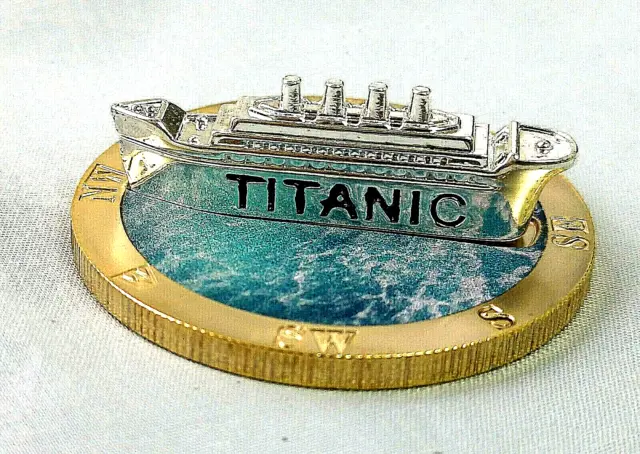
Titanic 3D Silver Ship Gold Coin Compass Sank 1912 Ocean Liner Film Cruise Model
£14.99 Buy It Now 22h 59m
Donald Trump Silver Gold Coin US President MAGA White House Americana 2024 USA
£0.99 1 Bid 1d 2h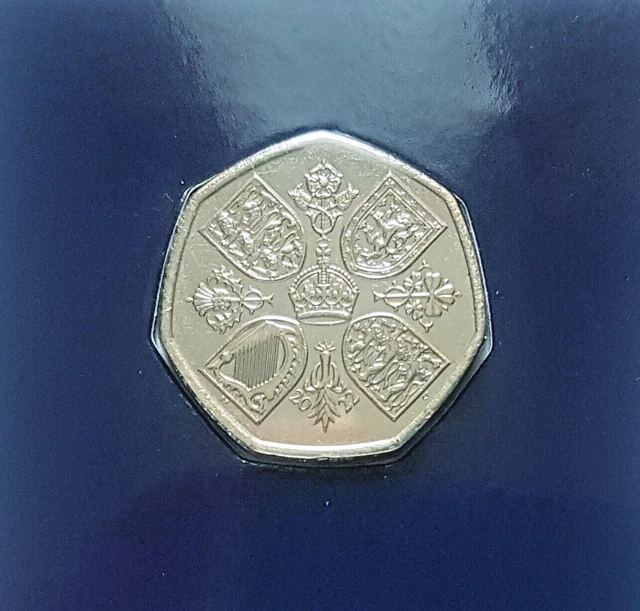
2022 Uk 50P King Charles Iii - Queen Elizabeth Ii Memorial Fifty Pence Coin Unc
£5.99 Buy It Now 25d 0h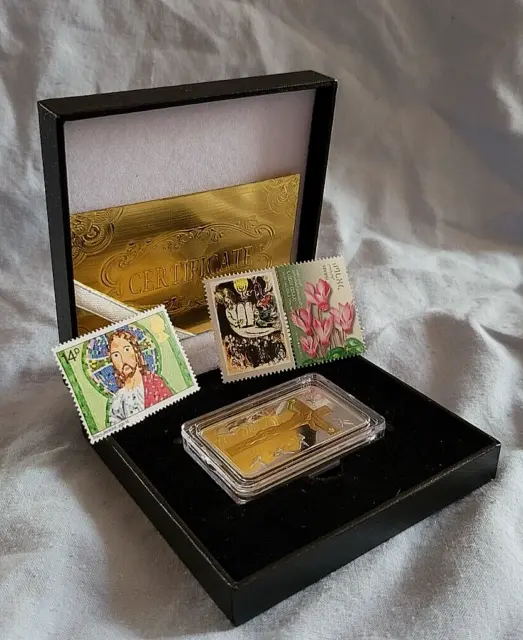
Jesus 10 Commandments Silver Gold Bar COA Box Coin Old Stamps Case Israel Cross
£5.50 8 Bids 1d 1h
The George And The Dragon £5 Coin Collection. Jubilee Mint With COA
£20.81 3 Bids 2d 15h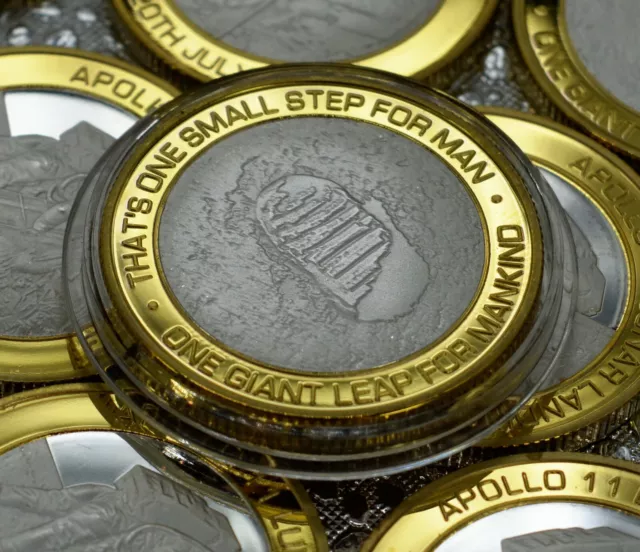
APOLLO 11 LUNAR/MOON LANDINGS Dual Metal Silver & 24ct Gold Commemorative 1969
£8.99 Buy It Now 16d 23h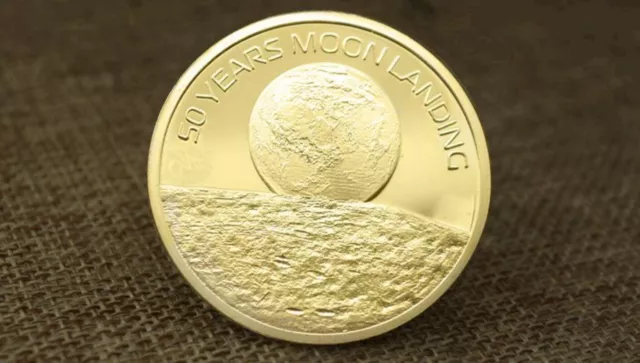
50th Anniversary Moon Landing Gold Plated Commemorative Coin Collectible AAA
£3.14 Buy It Now 6d 8h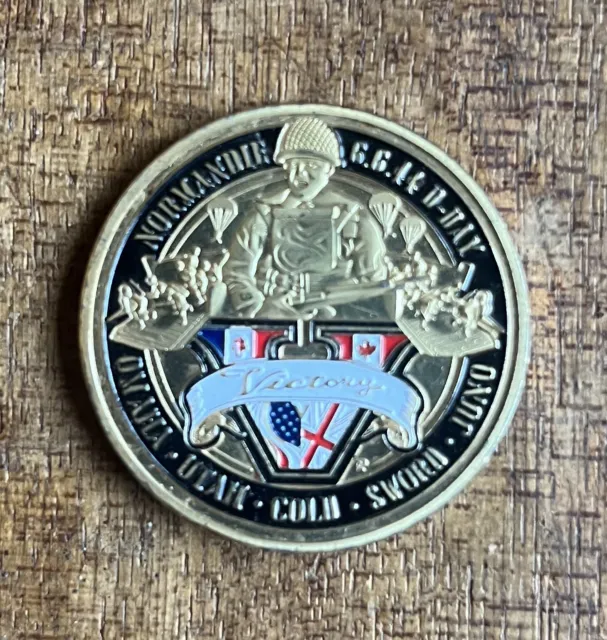
D-Day Commemorative Medal Coin WW2 Collectors
£0.99 0 Bids 21h 7m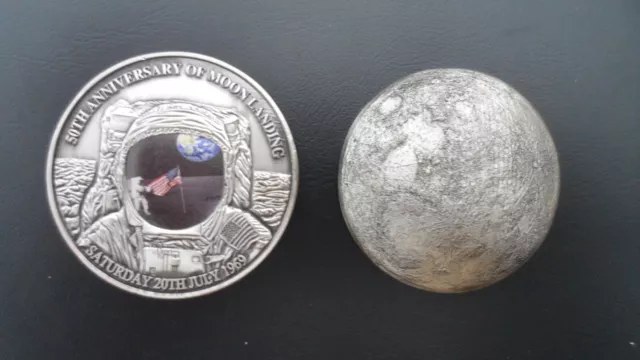
50th Anniversary of 1969 Moon Landing Domed 3D - Silver plated/coloured comm. co
£10.00 Buy It Now 24d 3h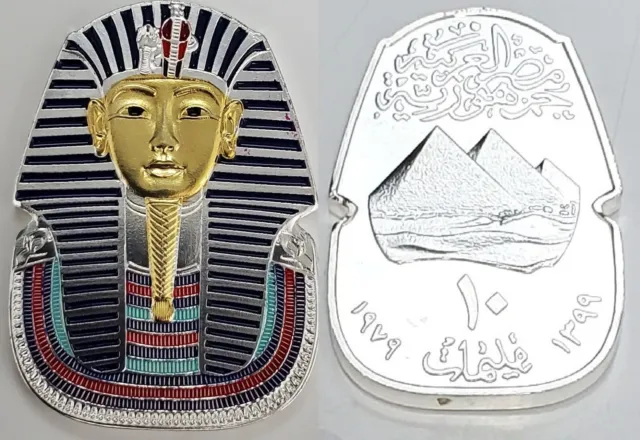
Gold Silver Pharaoh Coin Medal Egypt Pyramids History Sphinx Roman Empire Old UK
£12.99 Buy It Now 22d 23h
APOLLO 11 MOON/LUNAR LANDING Silver & 24ct Gold Commemorative & Display/Gift Box
£12.99 Buy It Now 16d 23h
Donald Trump Silver Gold Coin US President MAGA White House Americana 2024 USA
£11.69 Buy It Now 1d 22h
1912 RMS TITANIC Silver Coin Fiji Canada Ship Ice Berg Queen Elizabeth II Old UK
£9.99 Buy It Now 15d 23h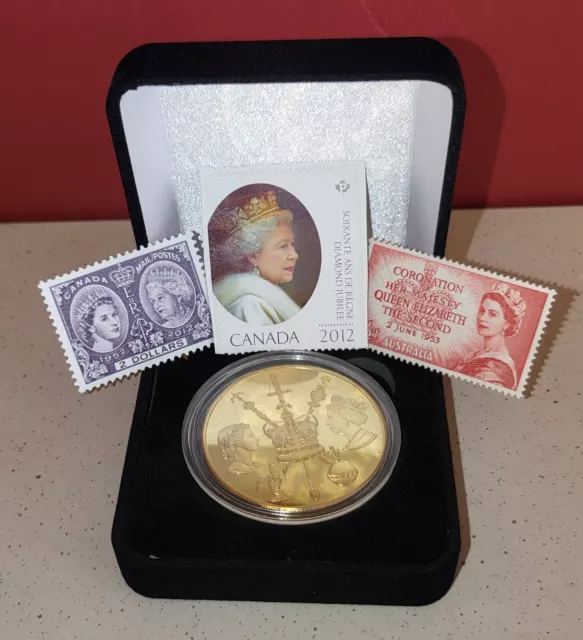
Queen Elizabeth II Diamond Jubilee Old Gold Coin Royal Family Spare The Crown UK
£4.00 4 Bids 8d 1h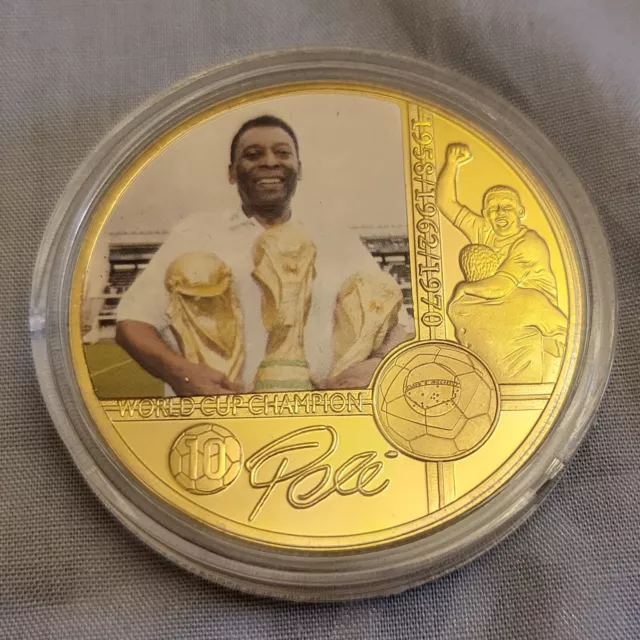
Pele Gold Coin 3 time World Cup Winner Brazil Signed Qatar 2022 Legend Santos UK
£9.99 Buy It Now 15d 23h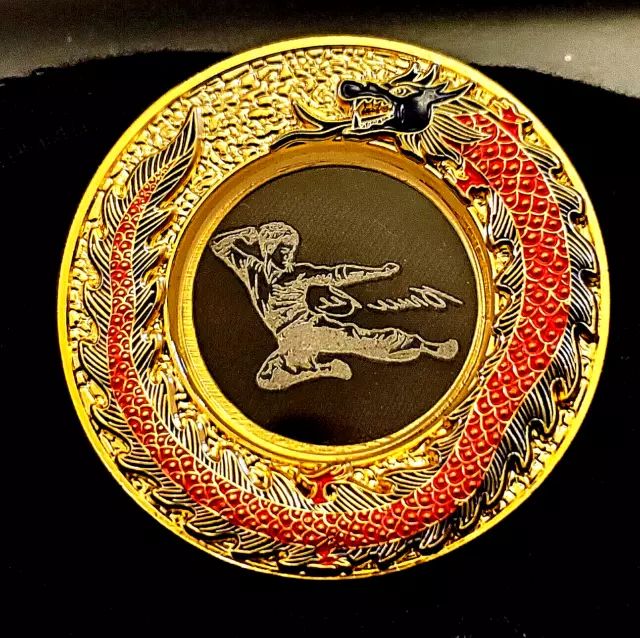
Bruce Lee See Through Coin Autographed Dragon 3D Chinese Movie Star TV Vintage
£12.99 Buy It Now 8d 22h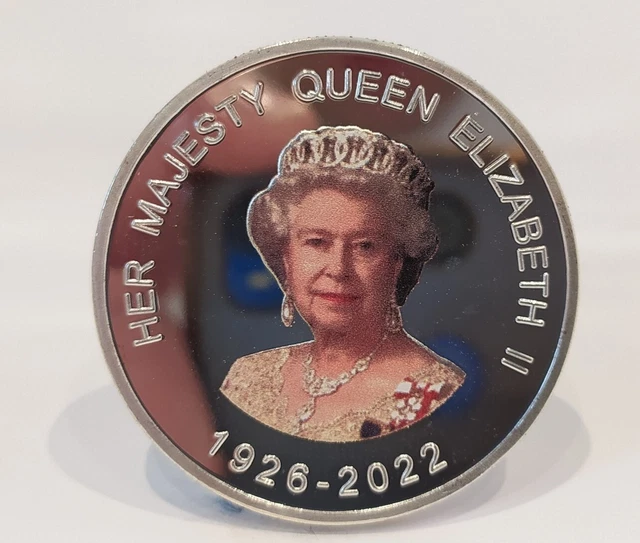
Queen Elizabeth II Silver Coin Prince Harry Spare Royal Family Buckingham Palace
£9.99 Buy It Now 24d 1h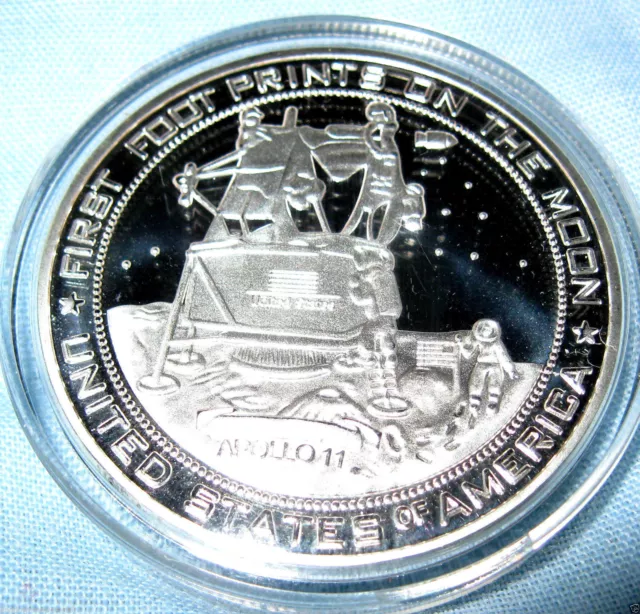
Moon Landing Silver Coin Apollo 11 Star NASA Wars Trek Space NASA Astronomy Old
£0.74 2 Bids 1d 0h
The London Mint Office - A War to End All Wars 1914-1918 Coin Collection
£5.00 Buy It Now 17d 18h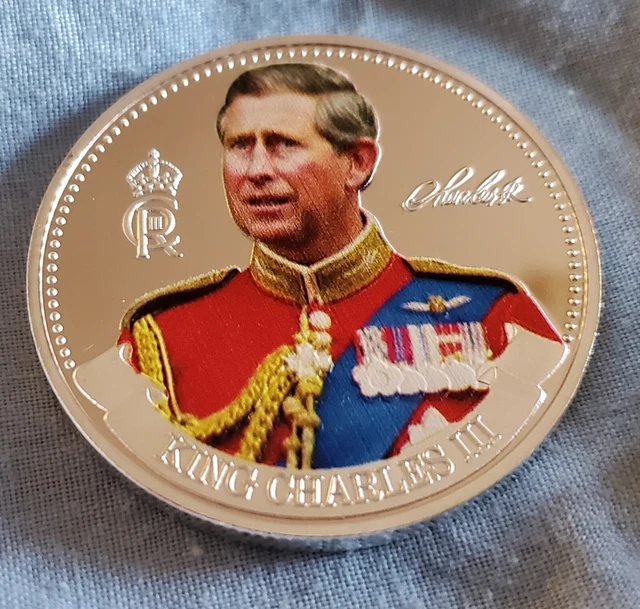
Queen Elizabeth II Gold Silver Coin King Charles III Signed Union Jack Royalty
£12.99 Buy It Now 18d 22h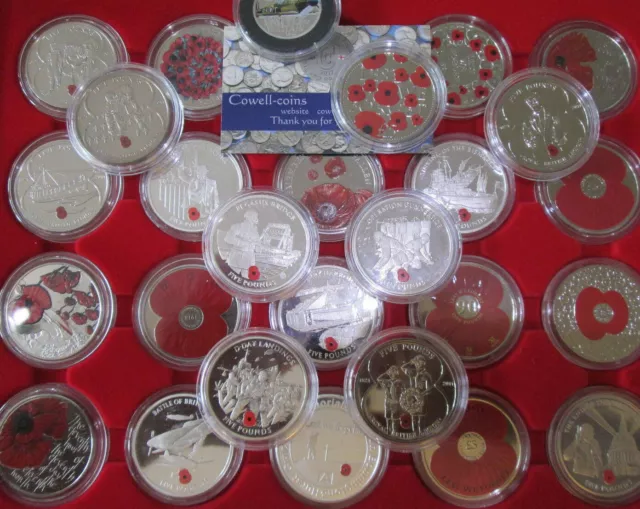
Various ROYAL MINT/ POBJOY POPPY COINS £5 CROWNS & MEDALLIONS PROOF, SILVER, BU
£15.99 Buy It Now 19d 15h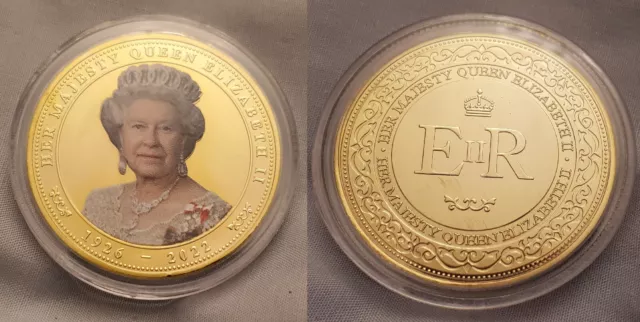
Queen Elizabeth II Gold Coin King Charles III Medal Royal Family London England
£9.99 Buy It Now 29d 1h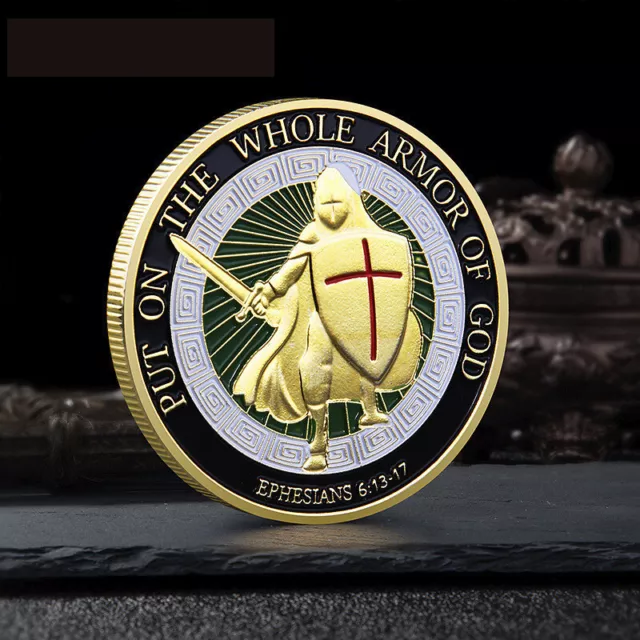
1Pc Put on the Whole Armor of God Commemorative Challenge Collection Coin Gift
£2.09 Buy It Now 5d 6h
Armstrong Moon Landing Apollo Man on the Silver Coin NASA Space U C Old USA Neil
£0.01 1 Bid 1d 1h
3D Gold Saturn Planet Coin Silver Rings Moon Moving Spinning Space 1610 Landing
£39.99 Buy It Now 20d 22h
50 Years Moon Landing Commemorative Coin
£10.00 0 Bids 18h 30m
D-Day 75th Anniversary Commemorative 50p Shaped Silver Coin Medal Collection
£12.49 Buy It Now 18d 1h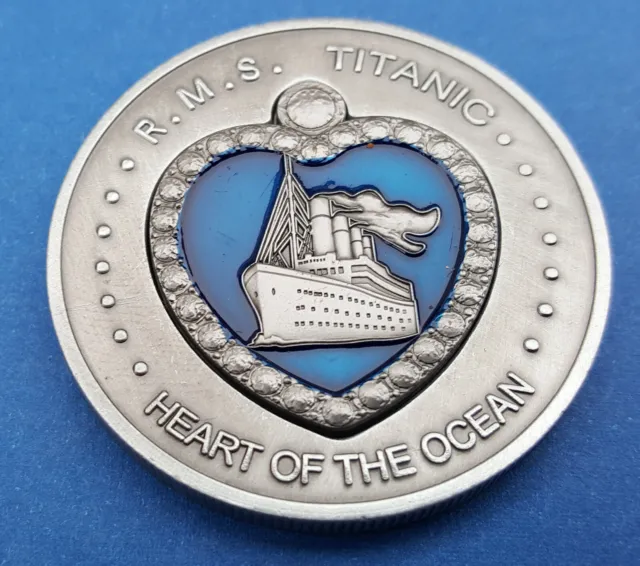
TITANIC Heart of the Ocean Pendant Antique Silver Coin Rose Naked Drawing Old
£11.69 Buy It Now 15d 22h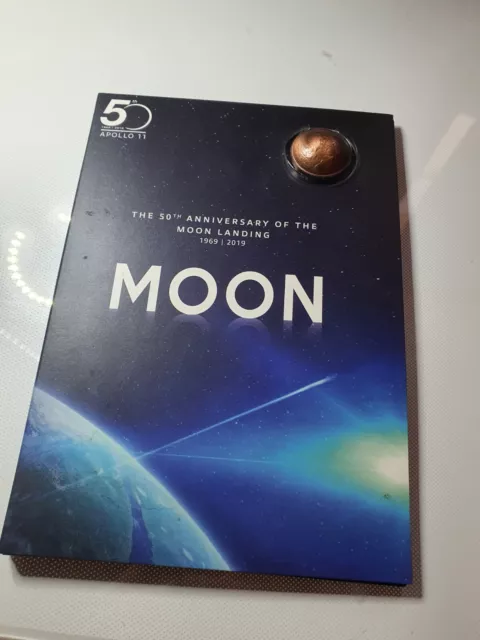
50th Anniversary of Moon Landing commemorative coins. Bradford Exchange Complete
£115.00 0 Bids 3d 21h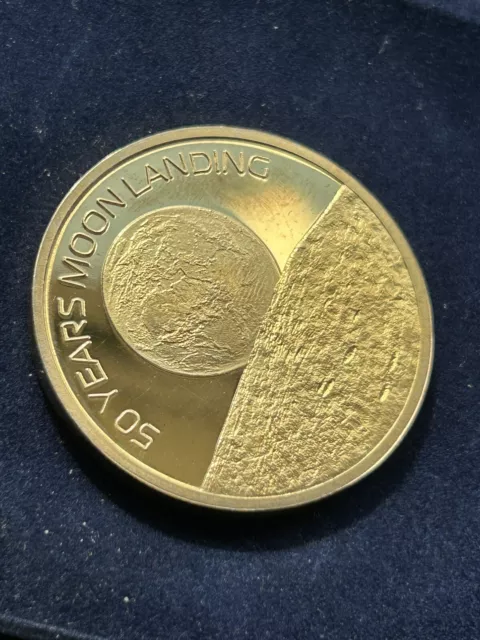
Gold Plated 50 Years Of The Moon Landing 1969-2019
£19.99 0 Bids 4d 18h 1 watcher
1 watcherBargain 3D Dome Moon Surface Silver Coin 1st Man Landing U C Old Apollo 1969 USA
£14.50 Buy It Now or Best Offer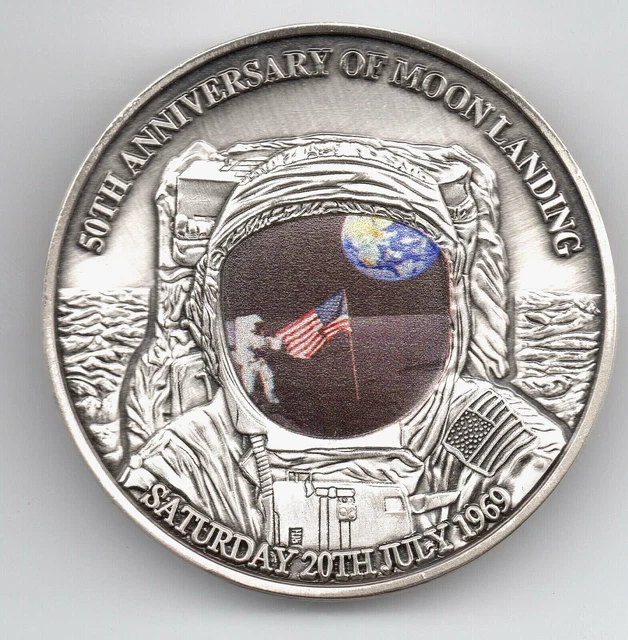 4 watchers
4 watchers3D Dome Moon Surface Silver Coin Landing Apollo Craters Astronaut Rocket Sci Fi
£0.12 2 Bids 1d 1h
OFFICIAL Croc CHARMS Crocs Jibbitz FOOD/HOLIDAY/DISNEY/METAL/GEMS/3D/LIGHT UP
£3.99 Buy It Now 1 watcher
1 watcher SILVER NECKLACE Kitty Cats Trees & Moon 3D Glass Dome Pendant Gift *Huge Choice*£7.97 Buy It Now
SILVER NECKLACE Kitty Cats Trees & Moon 3D Glass Dome Pendant Gift *Huge Choice*£7.97 Buy It Now
